- Improved value equation makes it pretty good value
- More than adequate range and performance
- An EV with a spare wheel!
- Cabin quality more $30k than $55k
- Daggy-looking wheels
- Safety systems improved but still irritating
While some people may think that electric vehicles are new on the automotive scene – and, for some people, we guess they are – the reality is that some EVs are now well into their second generations. The Hyundai Kona, which was one of the first relatively affordable electric cars on the global automotive market, was recently released in its second-generation form and the electric variant has now entered showrooms. Is the 2024 Hyundai Kona Electric Standard Range the electric small SUV to buy?
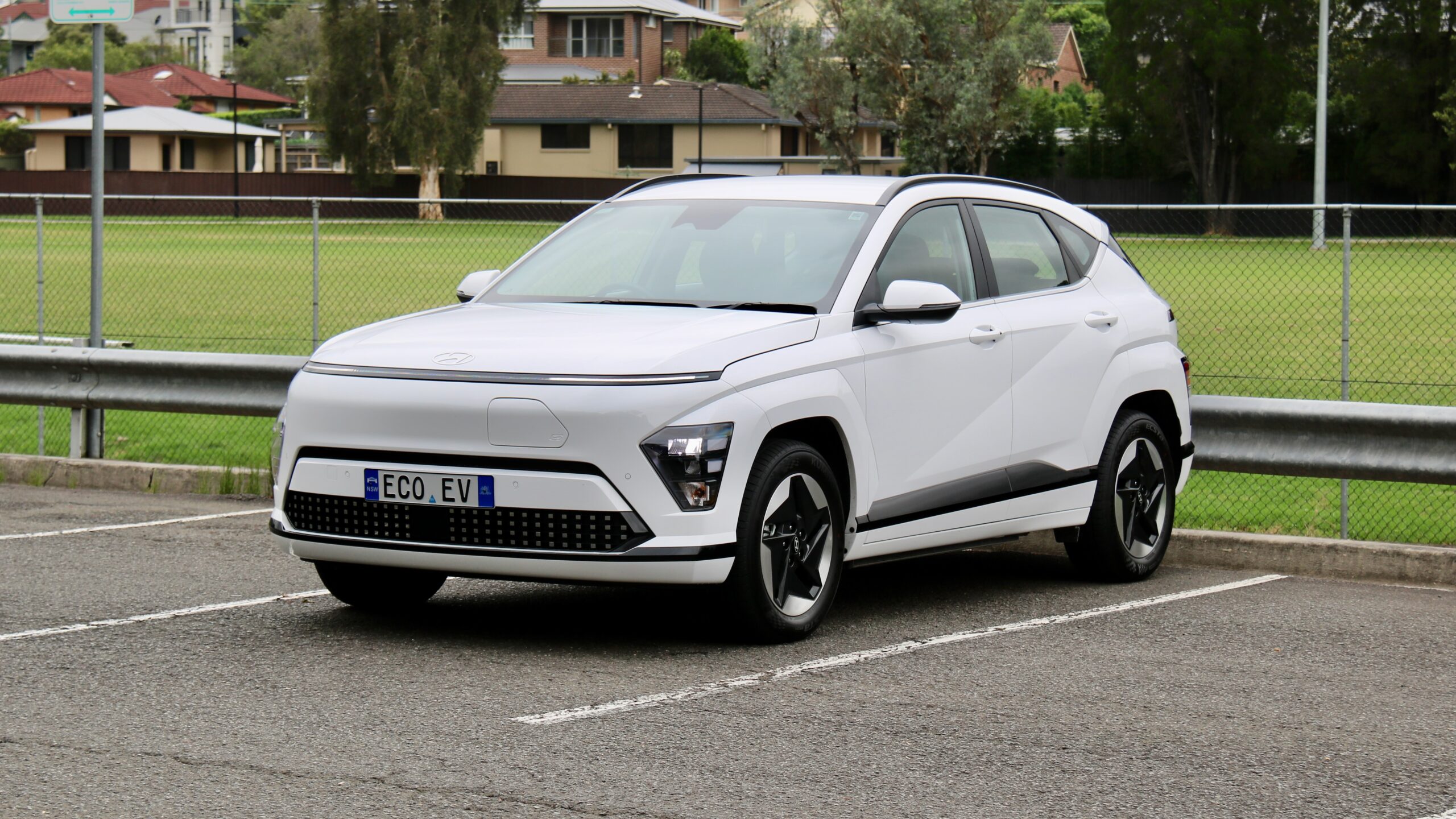
The new Kona Electric is being offered in three forms from launch, and here we’re testing the entry-level model, which is priced from $54,000 plus on-road costs – oddly enough, that’s a $500 price reduction on the previous Kona Electric despite it being larger, better equipped and better to look at. For $4,000 more, buyers can choose the Extended Range for 135km more range and more power too.
How much does the 2024 Hyundai Kona Electric Standard Range cost to buy?
Priced from $54,000 plus on-road costs (around $59,000 drive away, depending on location and before any state incentives), the 2024 Hyundai Kona Electric is available in three models – Standard Range, Extended Range and Premium Extended Range – and we tested the entry-level Standard Range model.
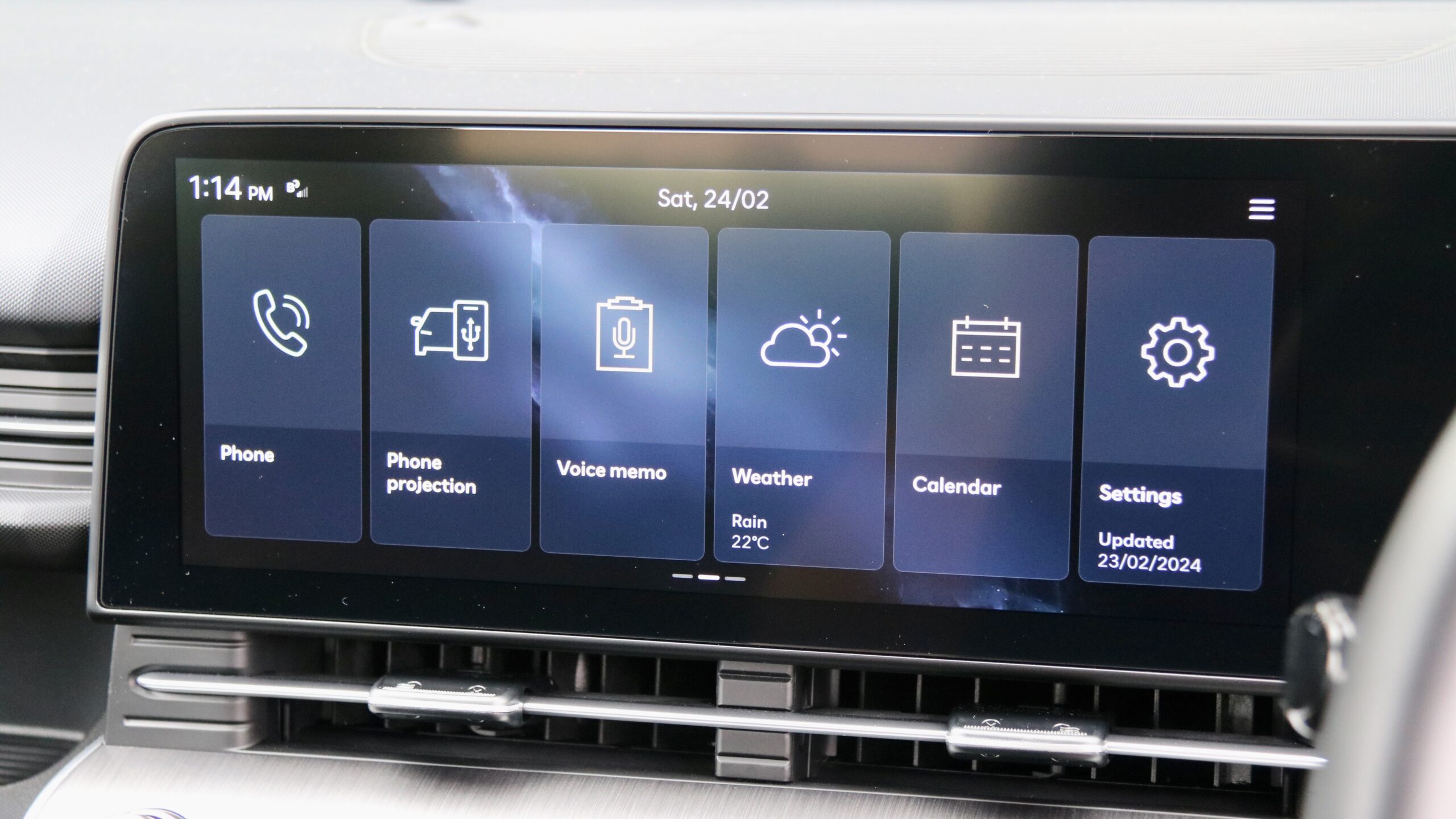
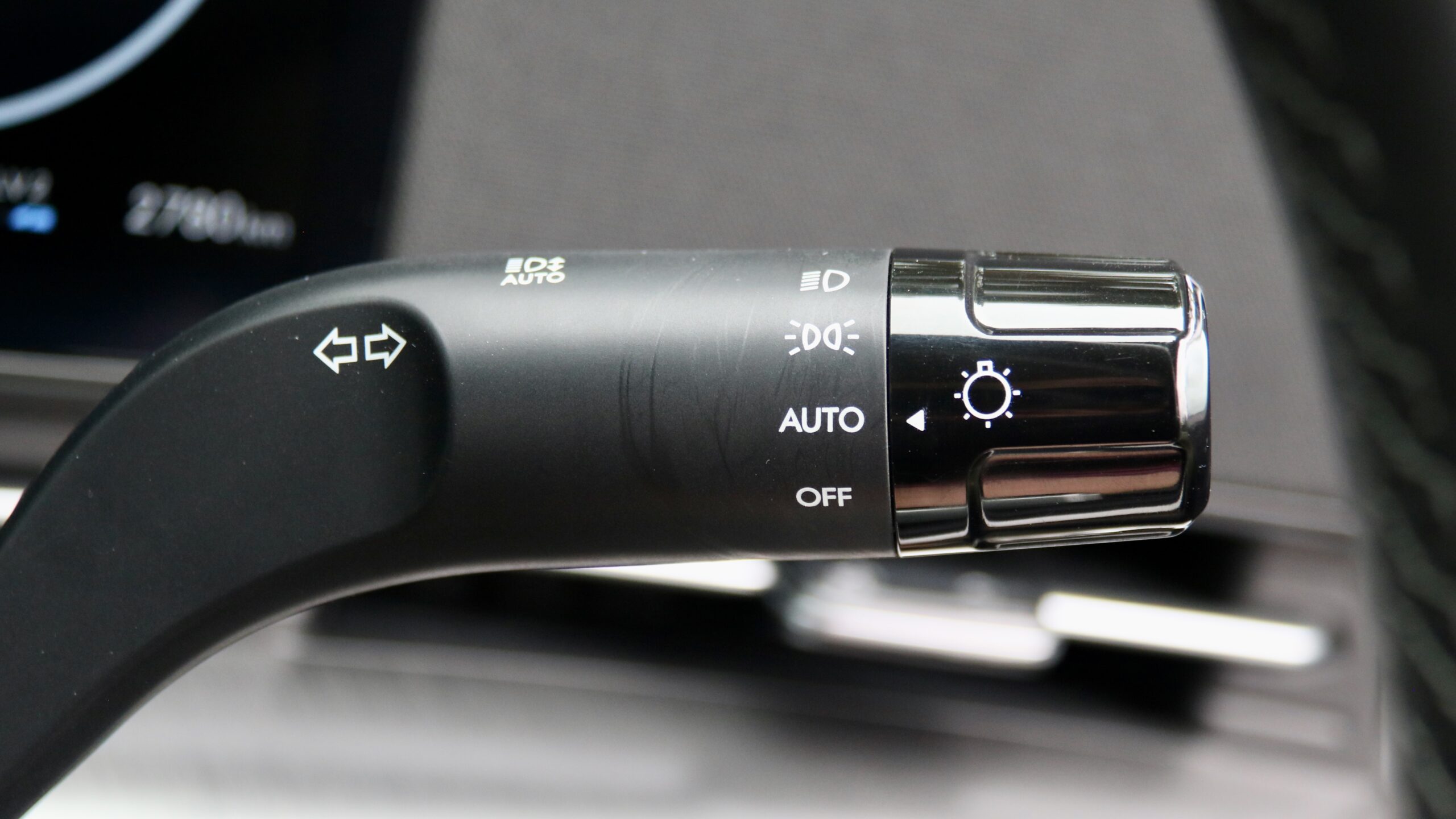
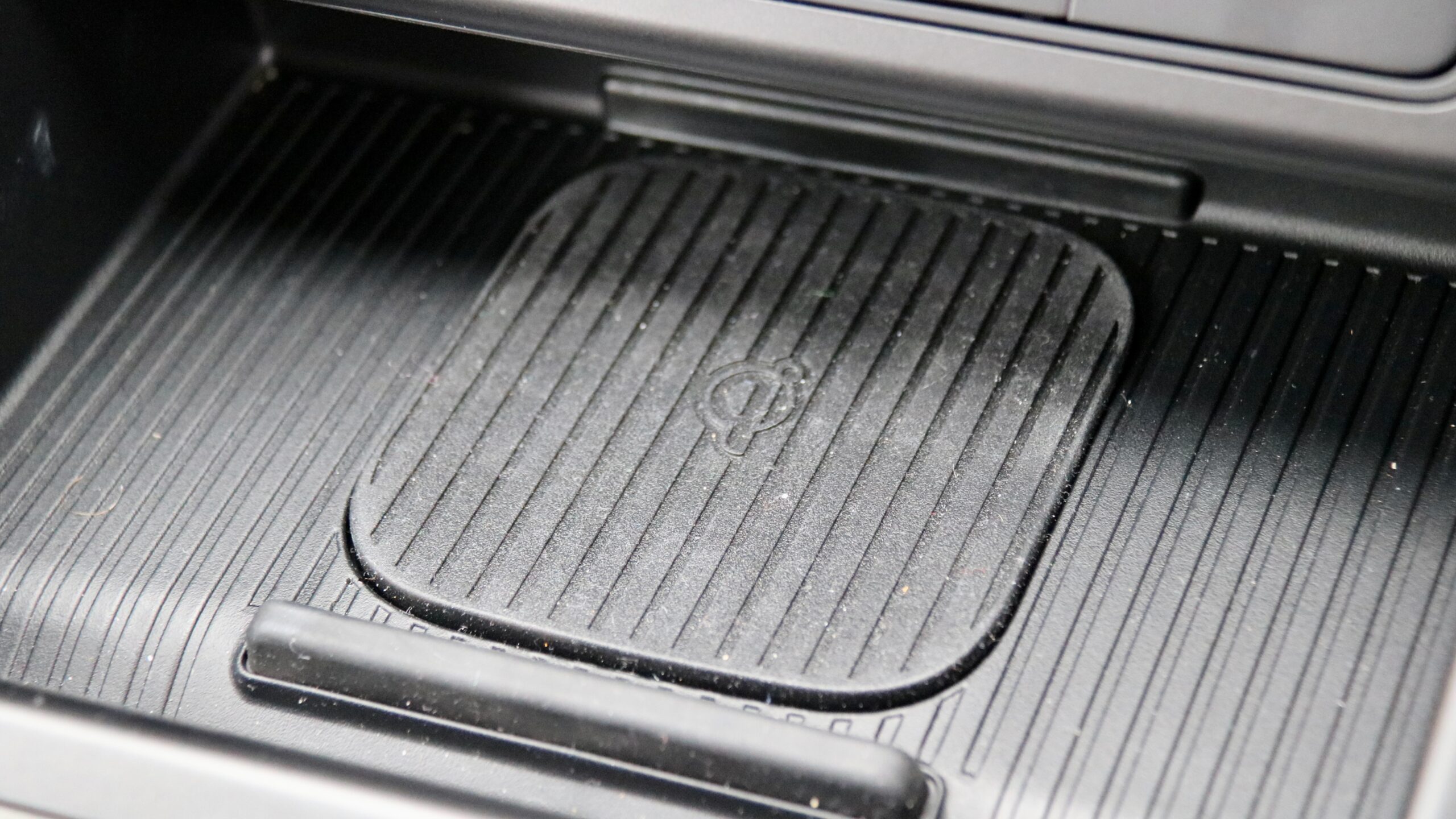
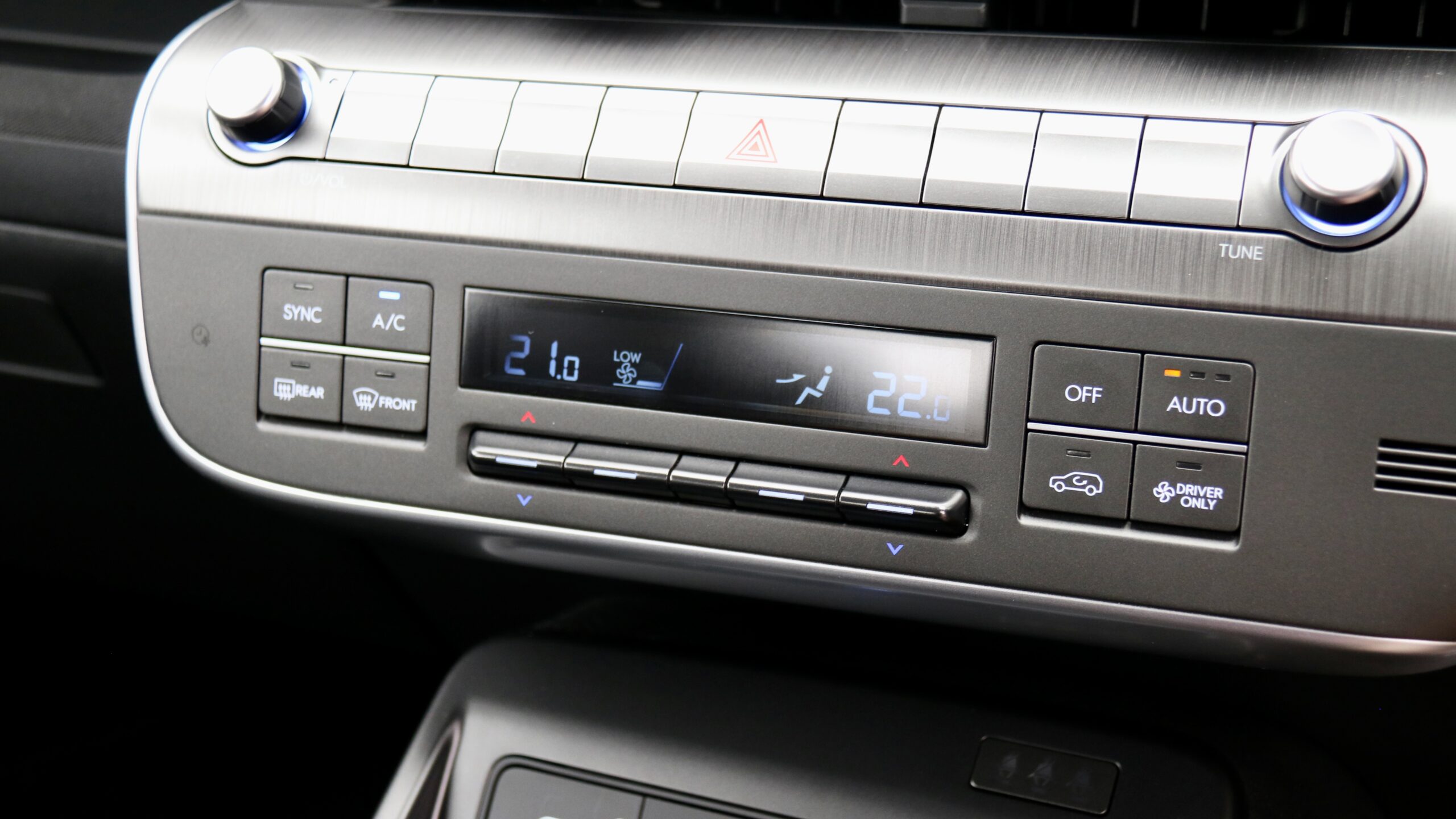
Kona Electric Standard Range standard features:
- 17-inch alloy wheels with a space-saver spare wheel
- Automatic dusk-sensing LED headlights
- Automatic wipers
- Roof rails
- Keyless entry and start with remote start
- Height adjustable front seats with driver’s lumbar adjustment
- 12.3-inch digital driver’s display
- 12.3-inch touchscreen with live services and over-the-air updates
- Wired Apple CarPlay and Android Auto
- Satellite navigation with live traffic
- AM/FM/DAB+ digital radio
- Four driving modes: eco, normal, sport, snow)
- Adjustable regenerative braking including ‘i-Pedal’ one-driving mode
- Wireless phone charger
- 4x USB-C ports (2x front, 2x rear)
- Six-speaker sound system
- ‘Bluelink’ connected car services with emergency calling and a smartphone app for remote locking/unlocking, climate control and geo location limits
- Dual-zone climate control with rear vents
- Auto-dimming rear mirror
- Heat pump
- Battery conditioning
- Leather steering wheel
- Vehicle-to-load (V2L) functionality
Kona Electric Standard Range safety equipment:
- Seven airbags (including a front centre unit)
- Auto emergency braking (AEB) including pedestrian, cyclist and intersection assist
- Lane keep assist with lane departure warning
- Lane trace assist
- Adaptive cruise control with stop and go functionality
- Blind-spot monitoring with rear cross-traffic alert (both with braking)
- Safe exit warning
- Auto high beam
- Driver attention monitoring
- Intelligent speed limit assist
- Front and rear parking sensors
- Reversing camera
The Kona range received a four-star ANCAP safety rating with scores of 80 per cent in adult protection, 84 per cent in child protection, 80 per cent in vulnerable road user protection and 62 per cent for safety assistance.
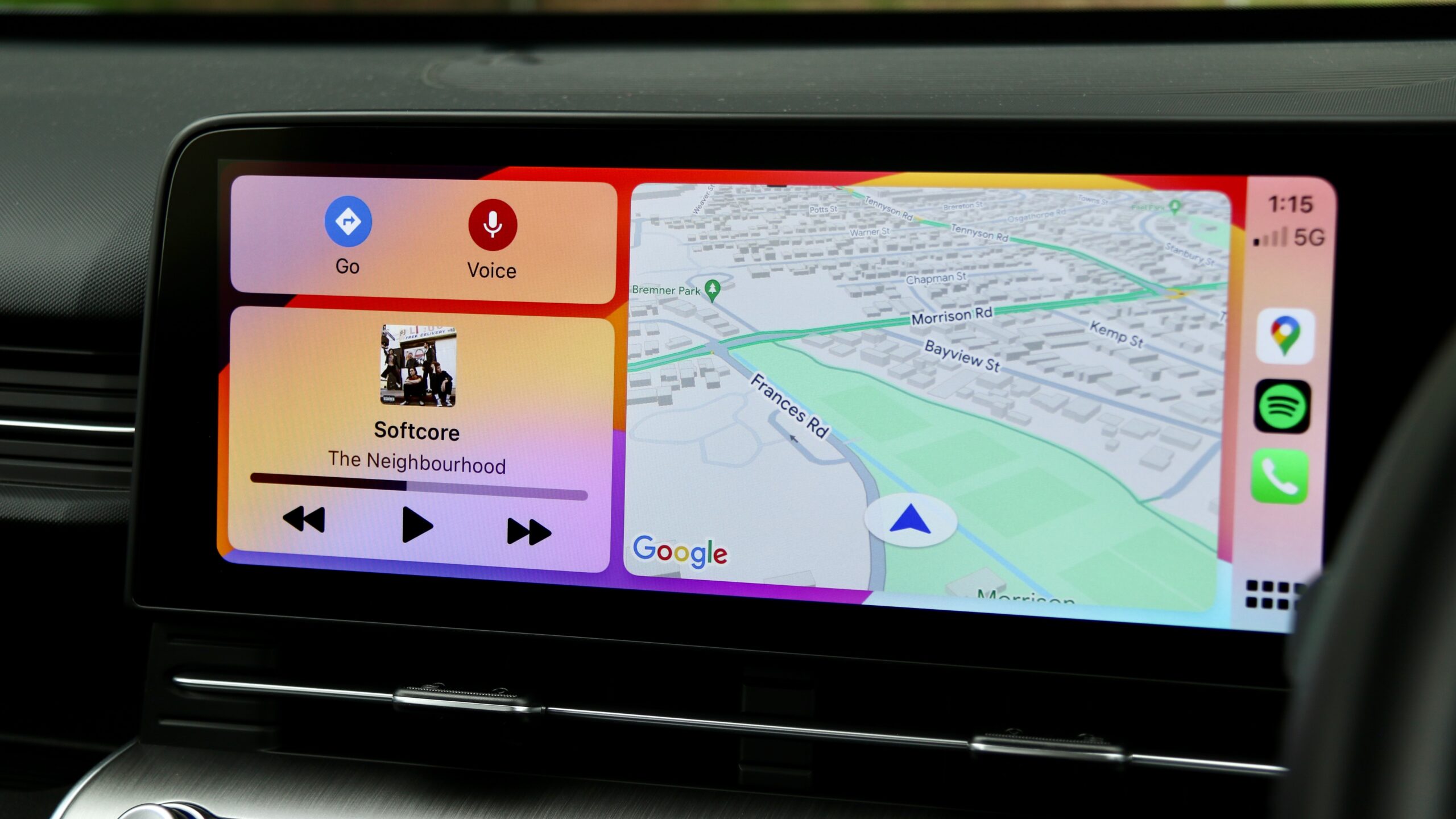
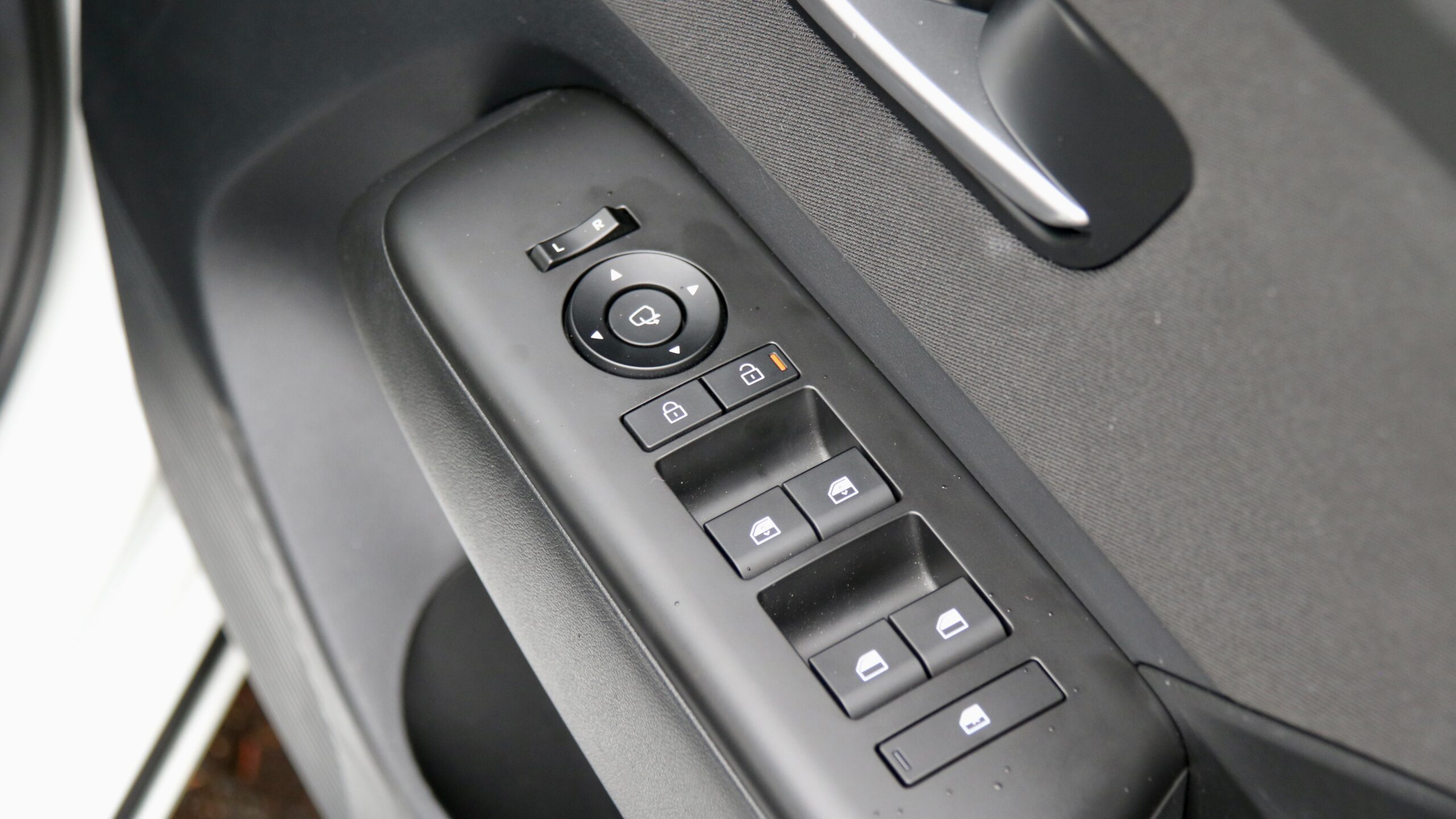
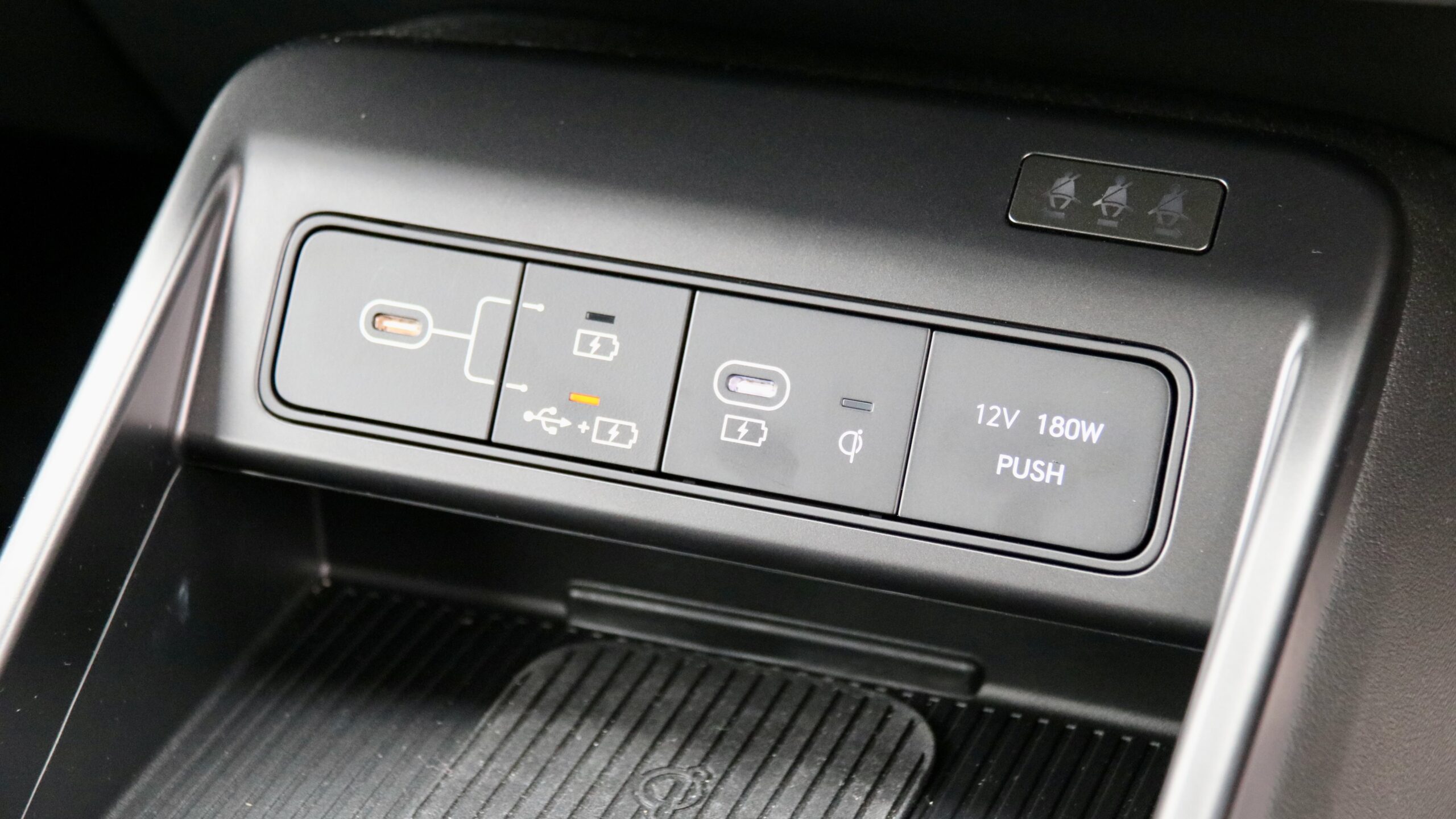
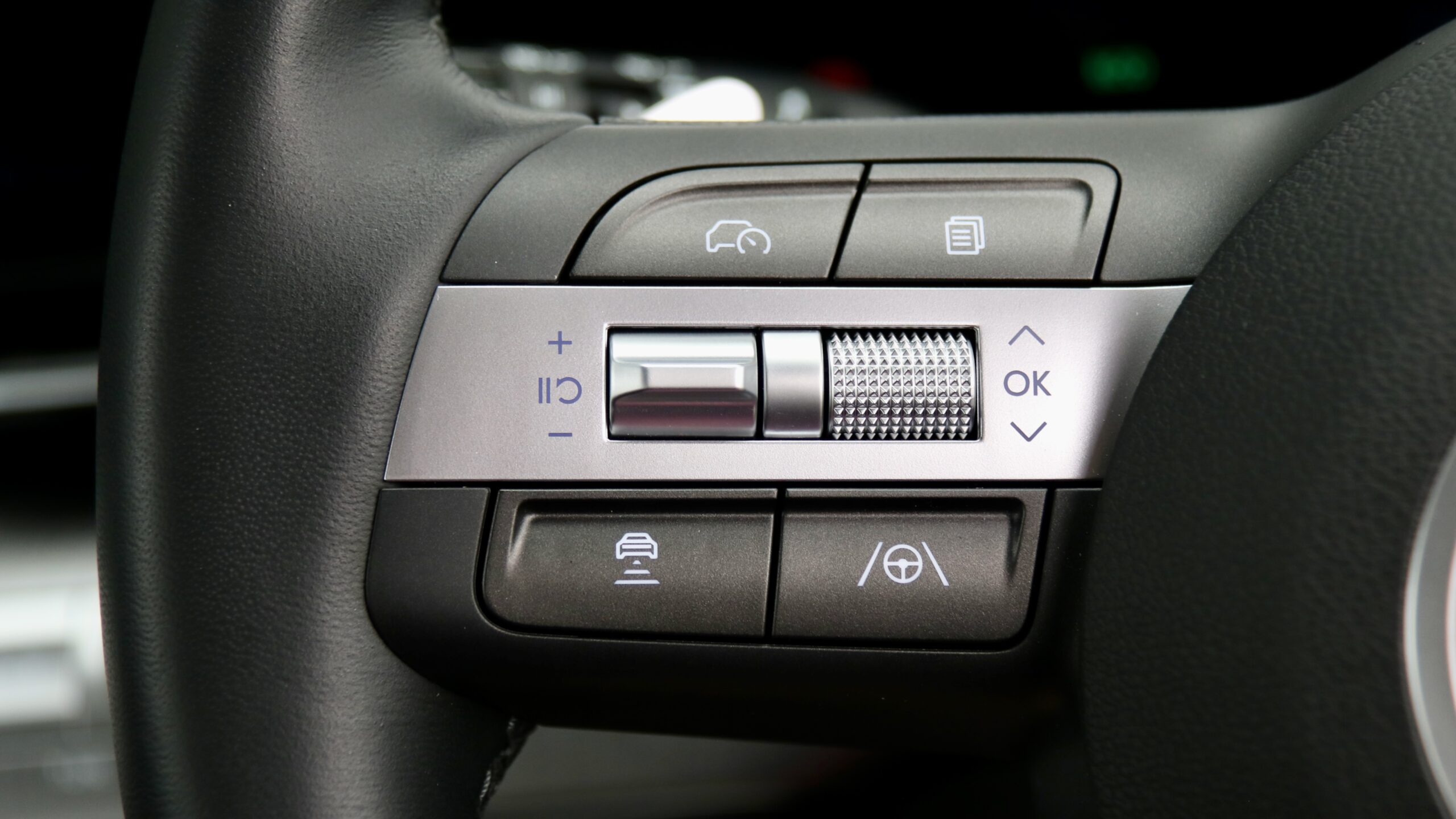
Kona Electric Standard Range colour options:
- Atlas White (no cost – on our test car)
- Mirage Green (no cost)
- Abyss Black (+$595)
- Ecotronic Grey (+$595)
- Denim Blue (+$595)
- Ultimate Red (+$595)
Regardless of colour choice, the Kona Electric Standard Range features black cloth upholstery.
When the original Kona Electric launched, it didn’t compete against many rivals but fast forward to today and it has quite a few to face off against: the Kia Niro EV (which shares the Kona’s platform and mechanicals), the MG ZS EV, the Peugeot e-2008 GT and the incoming Volvo EX30. But for now, we think that the Kona Electric Standard Range’s main rival is the BYD Atto 3 Standard, which is priced from around $53,000 drive away.
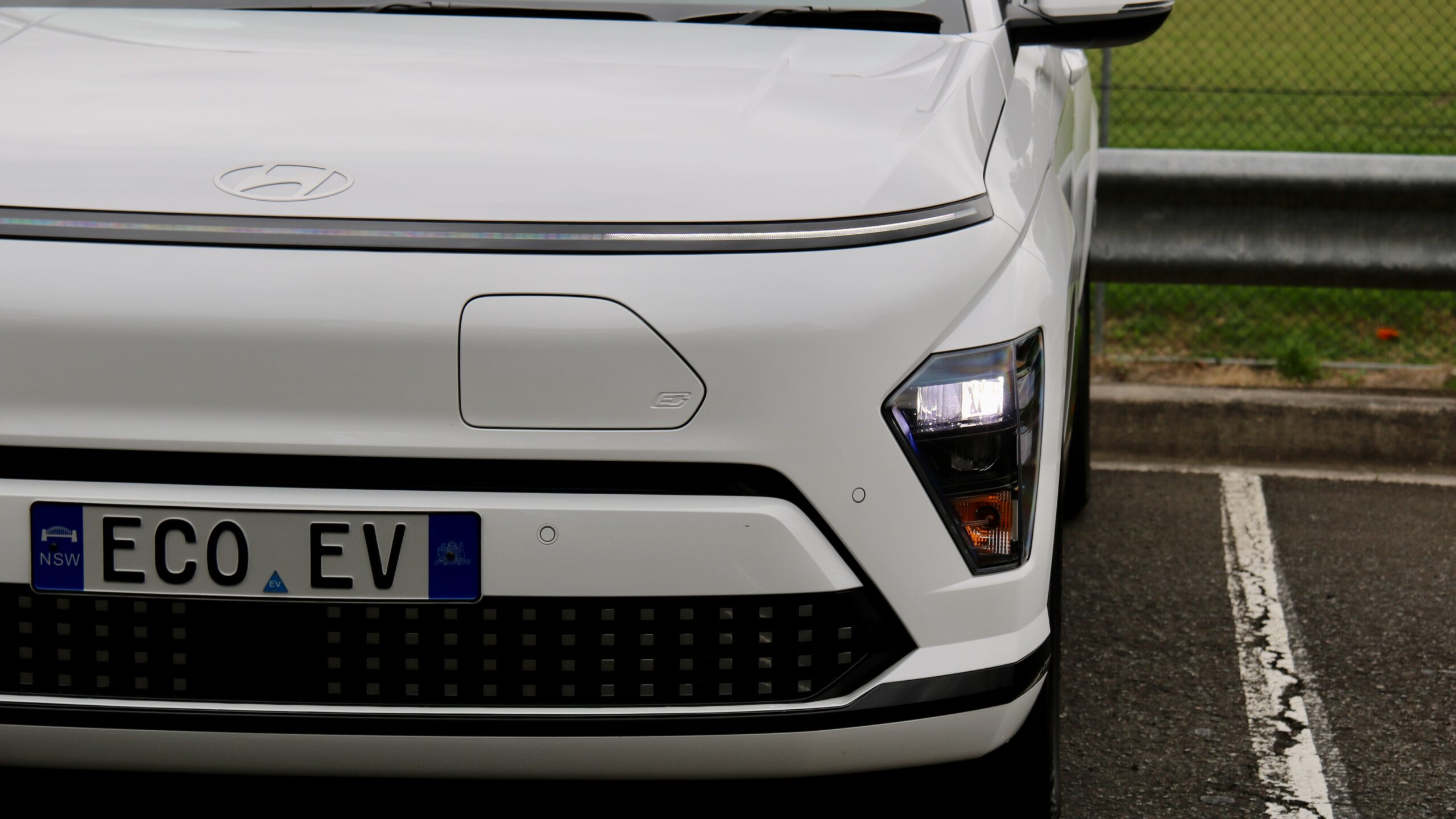
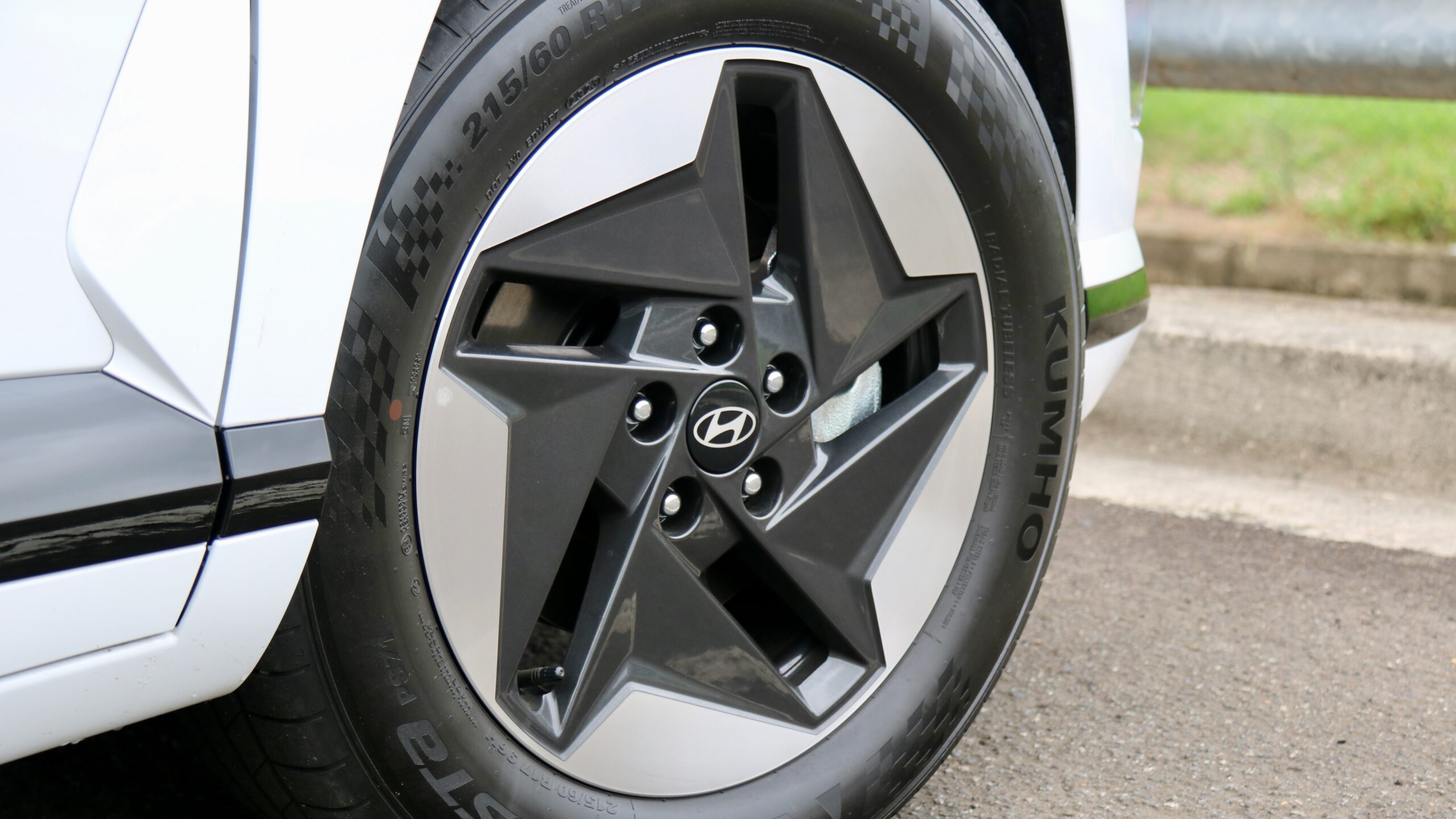
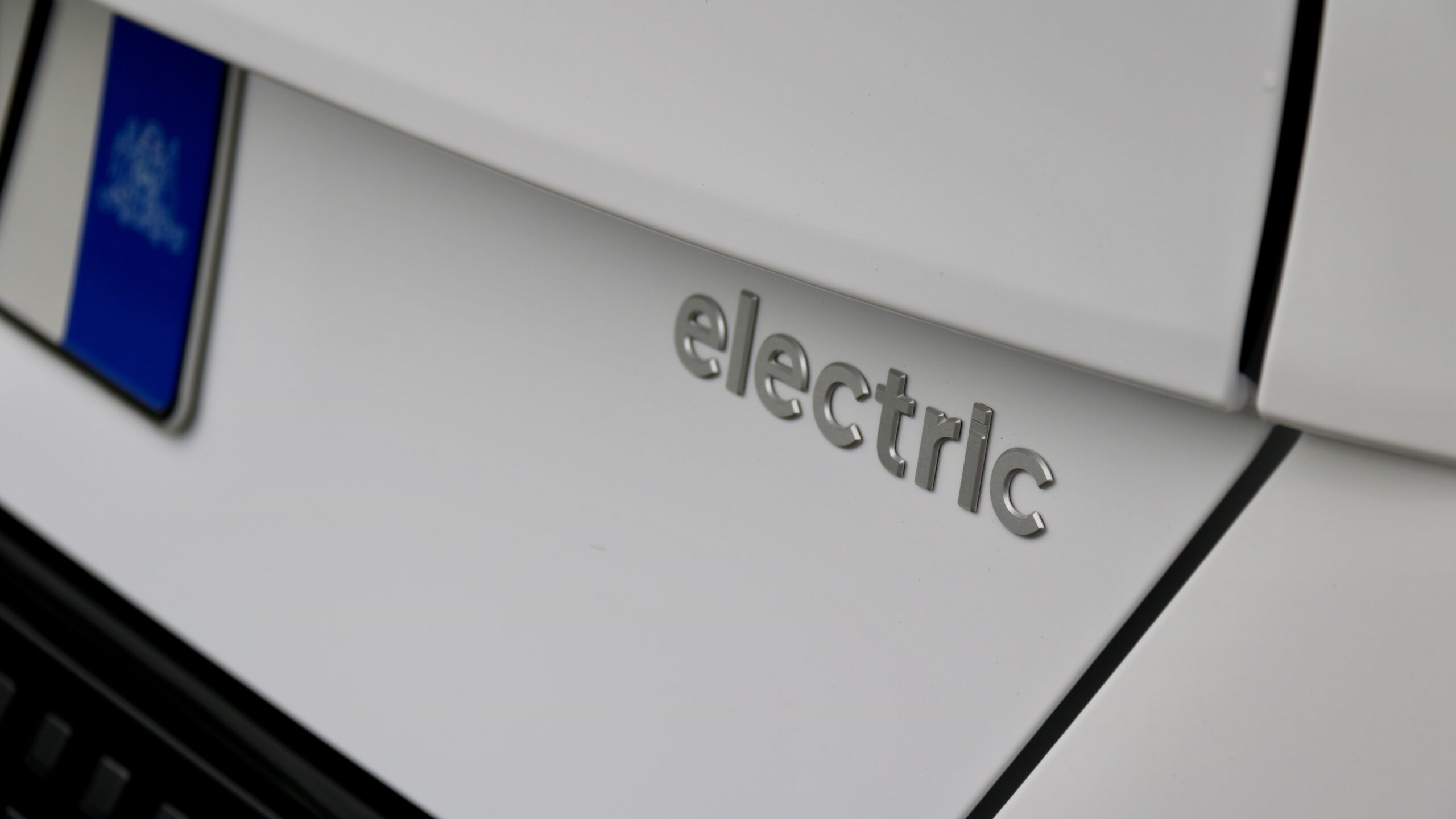
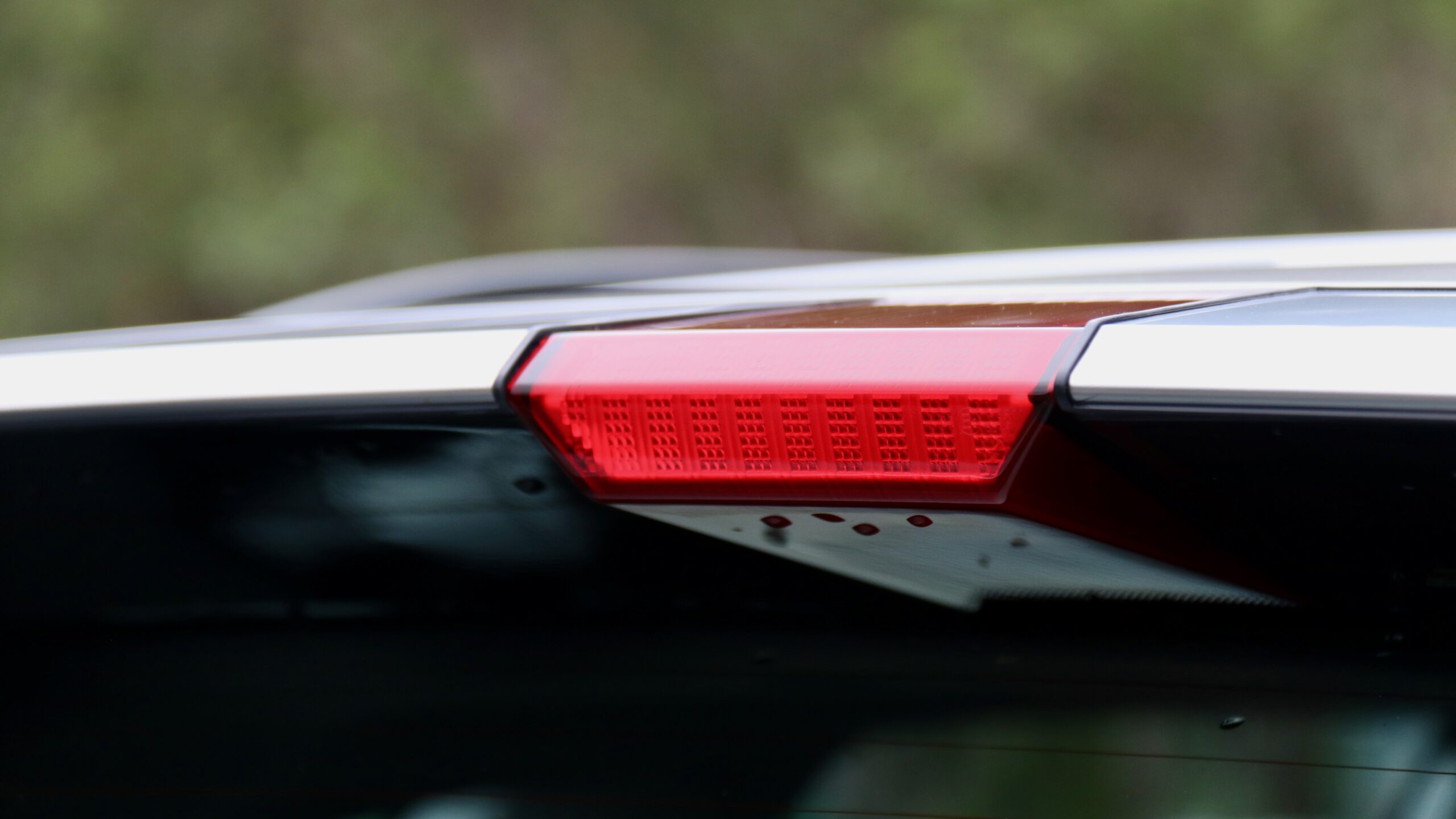
On the face of it, the Atto 3 looks like definitely better value than the entry-level Kona Electric. Not only is it $6,000 less to buy but it’s also better equipped with a panoramic sunroof, faux leather trim, two extra speakers, a powered tailgate, a larger infotainment system and heated and powered front seats. Against the Atto 3, the Kona Standard Range adds more functionality for the AEB system, a much larger 12.3-inch digital driver’s display, a spare wheel, two rear USB ports and AM radio functionality. But while the Atto 3 is better value than the Kona, the Kona offers better pricing than other rivals, like the EX30 ($59,990 +ORC) and Niro EV S ($66,590 +ORC).
How far does the 2024 Hyundai Kona Electric Standard Range travel on a charge?
Under the body of the 2024 Hyundai Kona Electric Standard Range is a 48.6kWh lithium ion battery pack that feeds a 99kW/255Nm electric motor driving the front wheels. The claimed driving range is 370km on the WLTP cycle, while it can be charged at a maximum of 10.4kW on an AC charger or 100kW on a DC fast charger – the typical 10 to 80 per cent charge takes as little as 45 minutes (20 minutes quicker than using a 50kW charger), while the same charge using a slower AC charger (at 10.4kW) will take approximately five hours and 15 minutes.
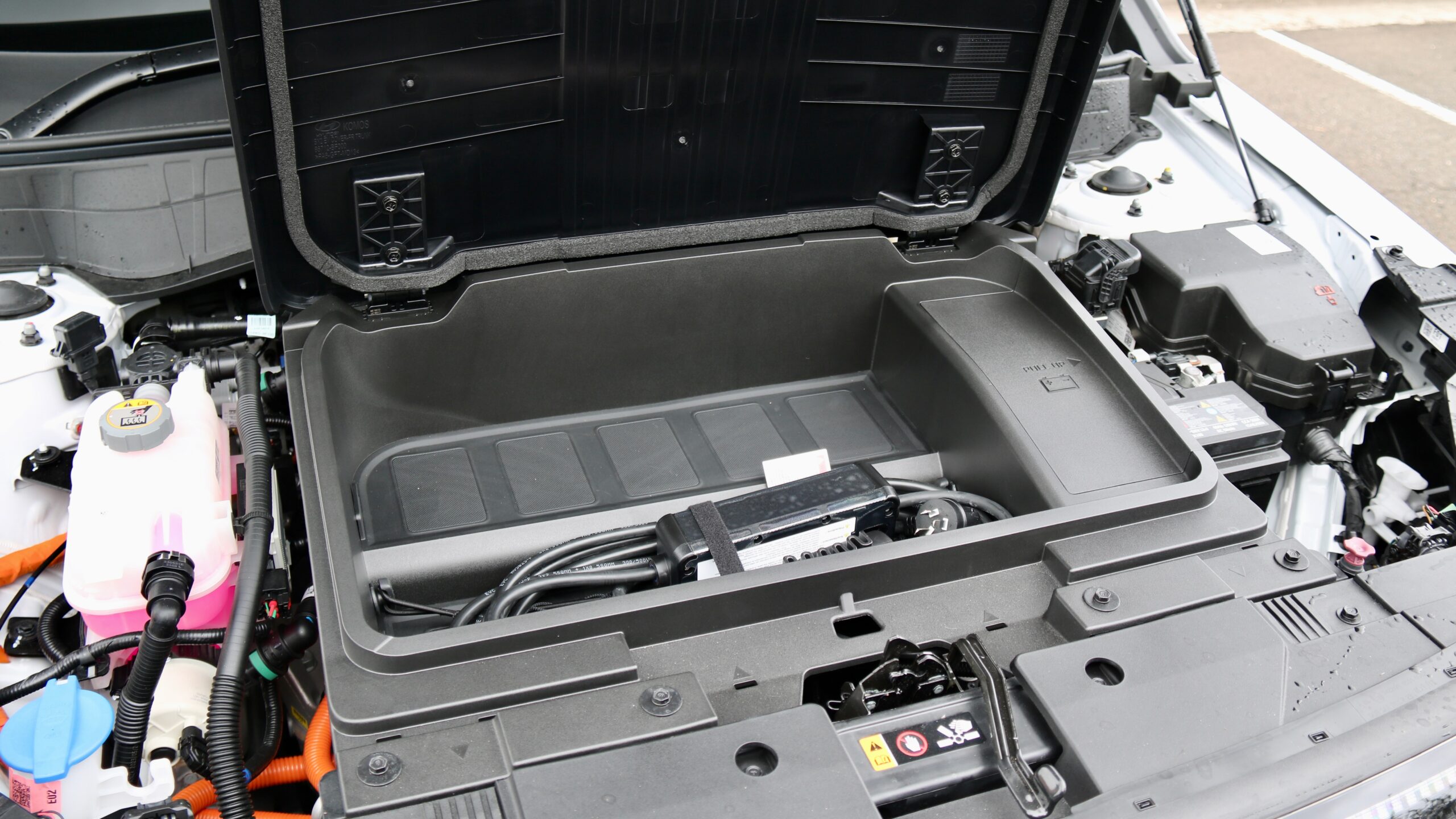
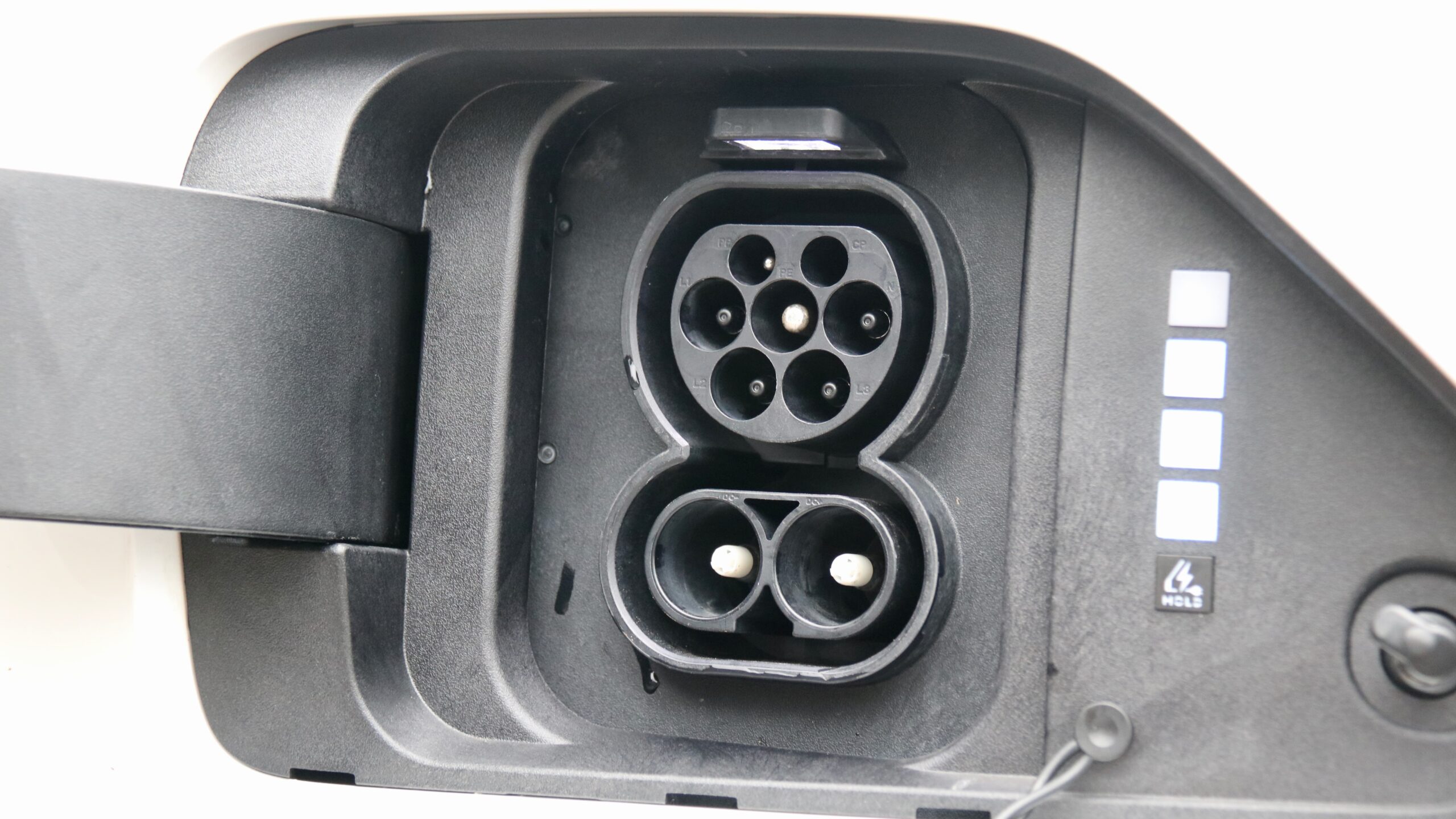
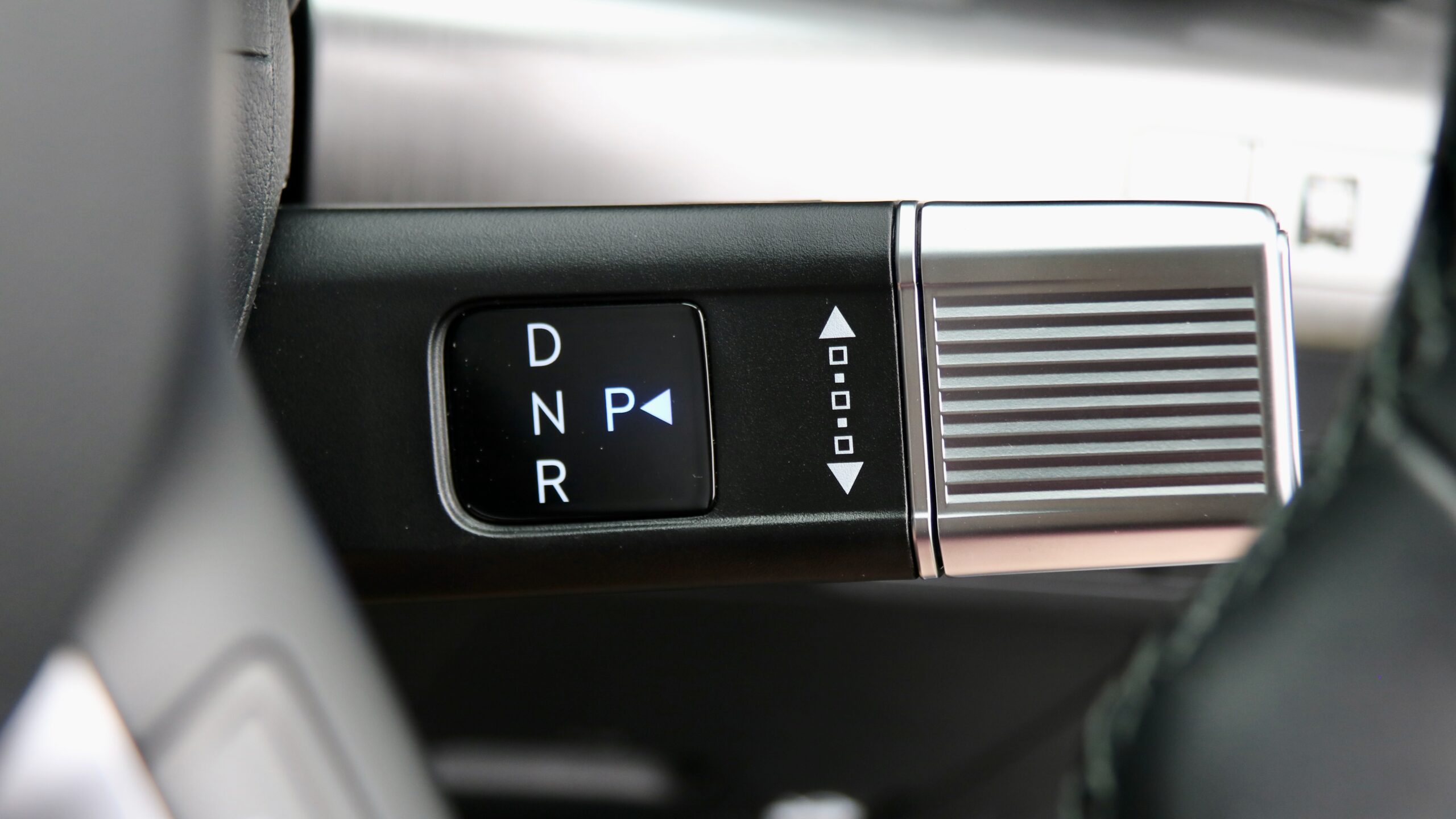
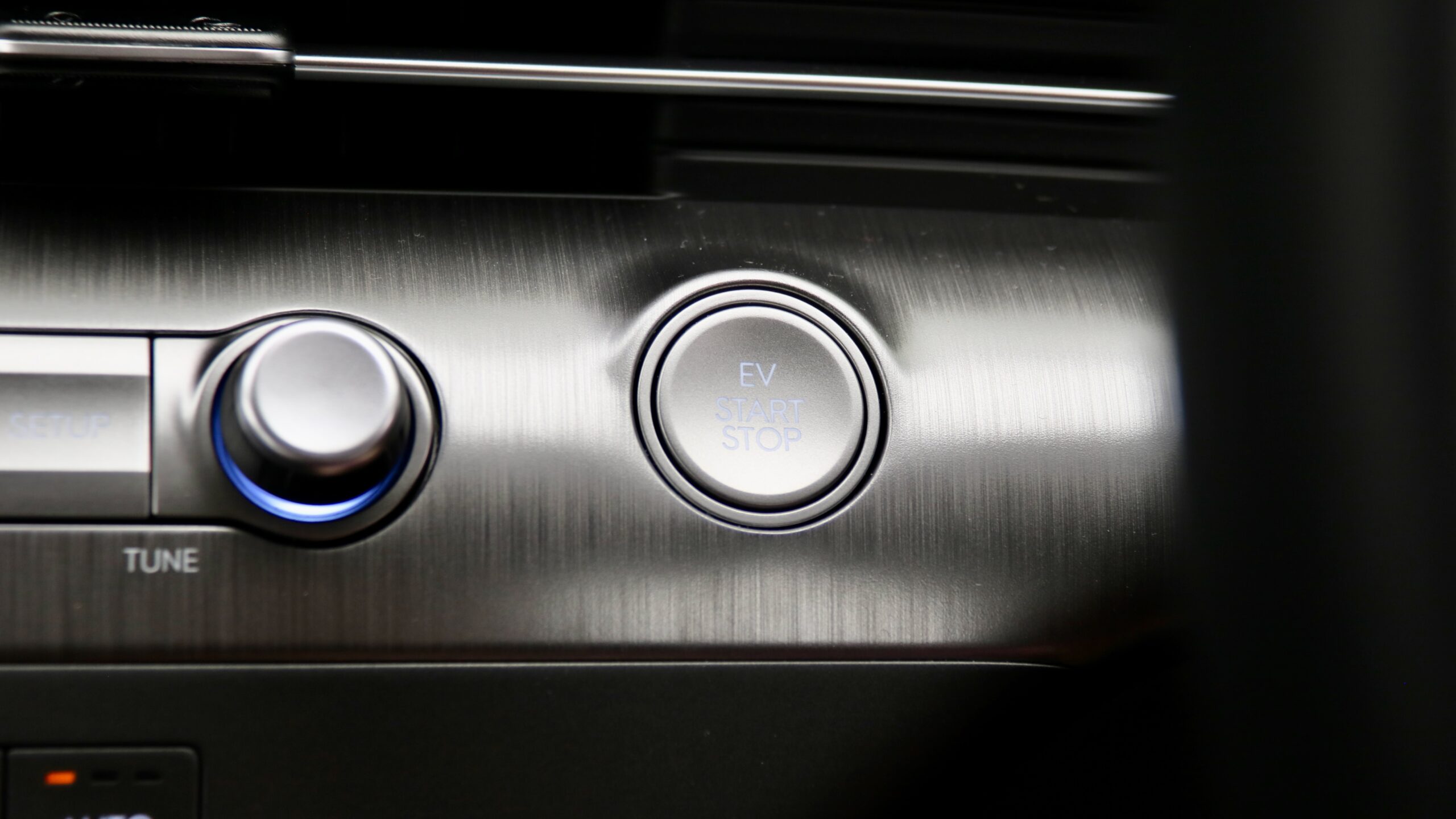
By comparison, the entry-level Atto 3 is more powerful (150kW/310Nm), but its WLTP-rated range is a lesser 345km and its peak charging speeds (AC: 7kW, DC: 70kW) are slower than the Kona Electric Standard Range. Hyundai claims energy consumption of 14.8kWh/100km and we observed consumption of just above the 15kWh/100km mark, but in urban-only testing we achieved consumption around 11kWh/100km, which is impressively frugal.
What is the 2024 Hyundai Kona Electric Standard Range like to drive?
Like the regular Kona, the 2024 Hyundai Kona Electric Standard Range is entirely pleasant to drive. It’s quiet, comfortable and pretty refined as well – plus, its visibility is largely pretty good too. The Kona Electric’s refinement is pretty good, while the ride quality – despite the 263kg weight increase to 1,690kg (tare) over the regular base Kona – is also generally pretty good too, and the independent rear suspension set up of the Electric versus the standard Kona’s torsion beam (plus the one-inch smaller wheels) helps. As for handling, the Kona Electric is capable of being fun, though its mass and eco tyres make it less engaging than the regular petrol Kona.
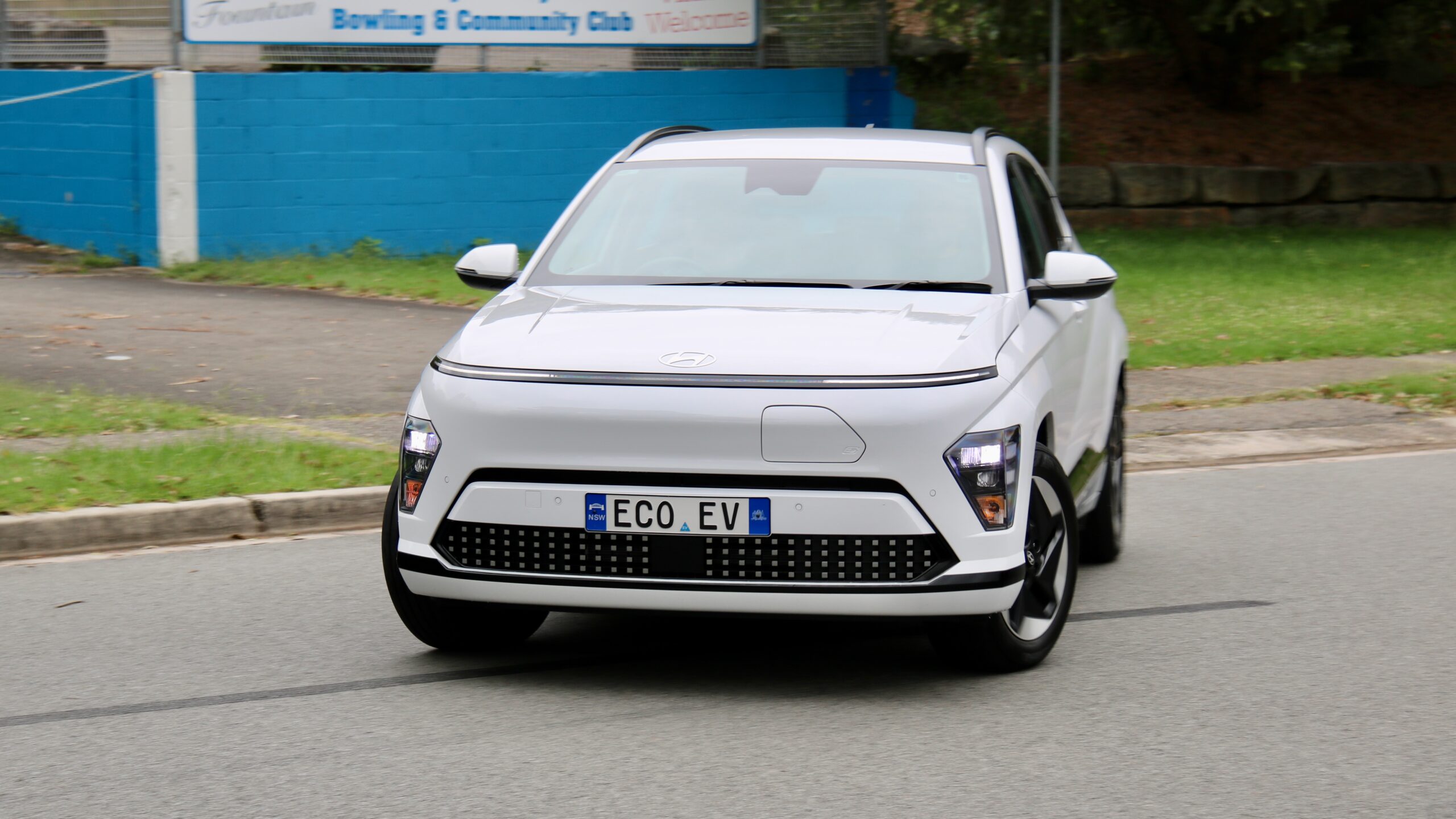
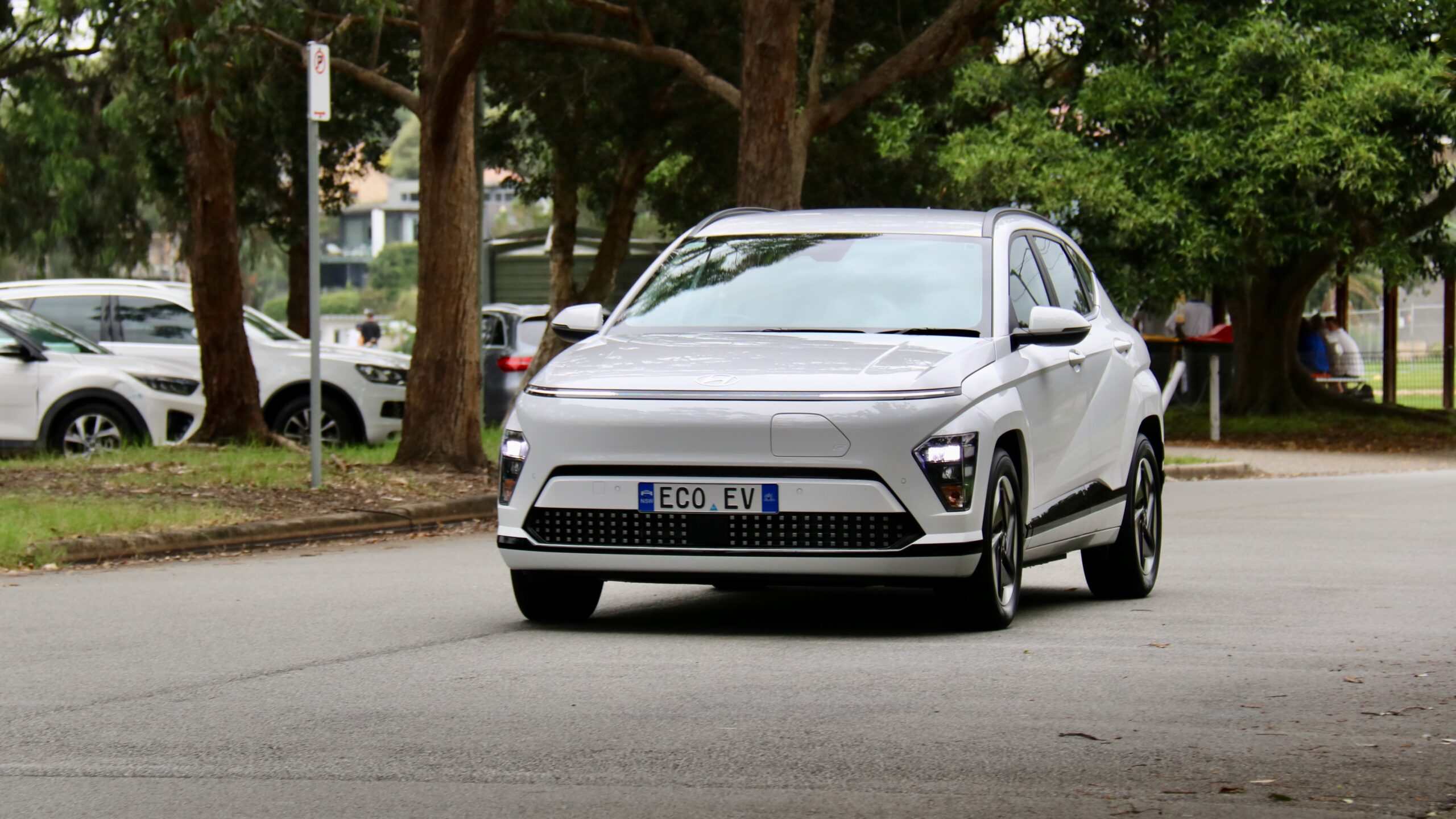
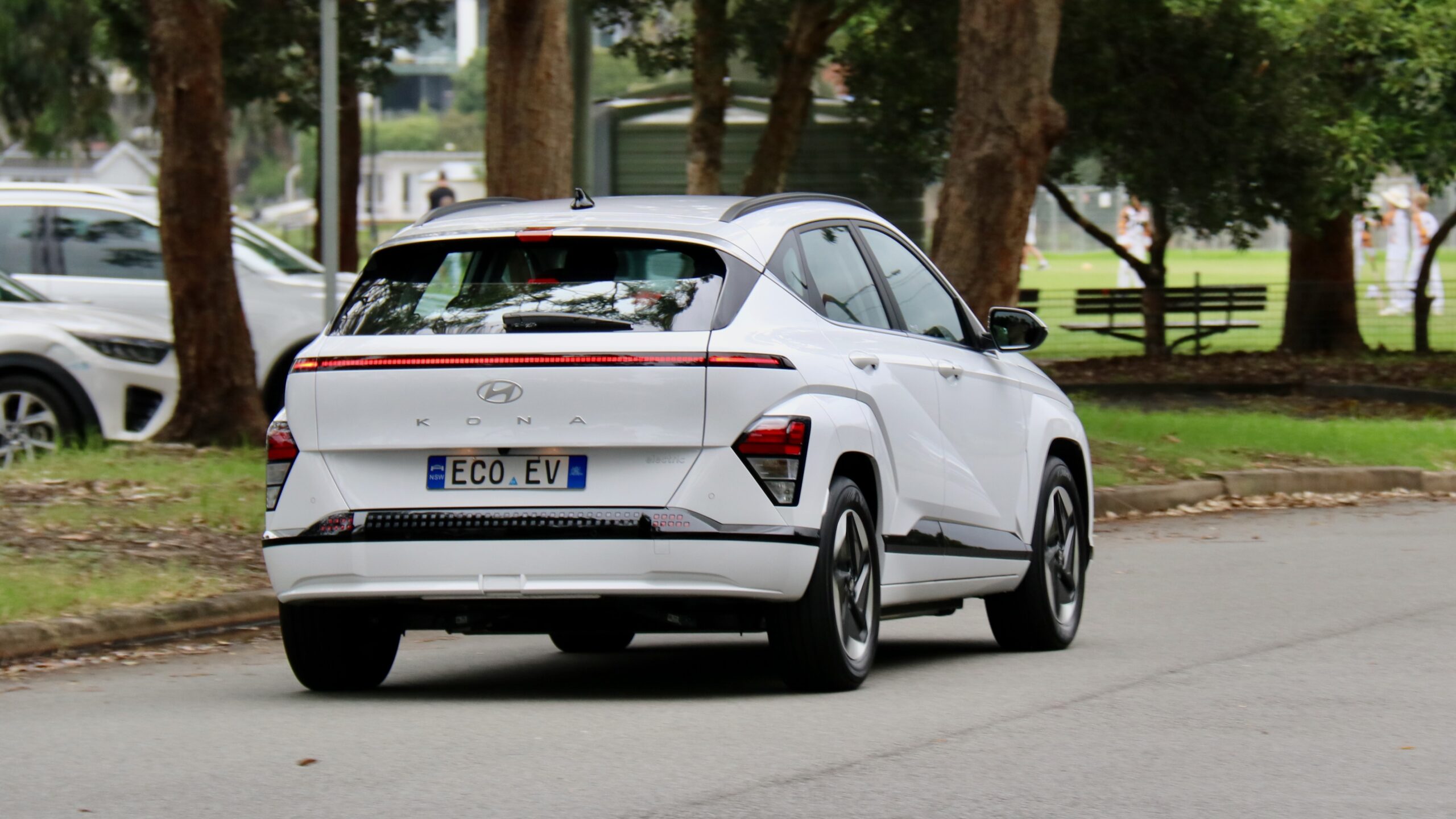
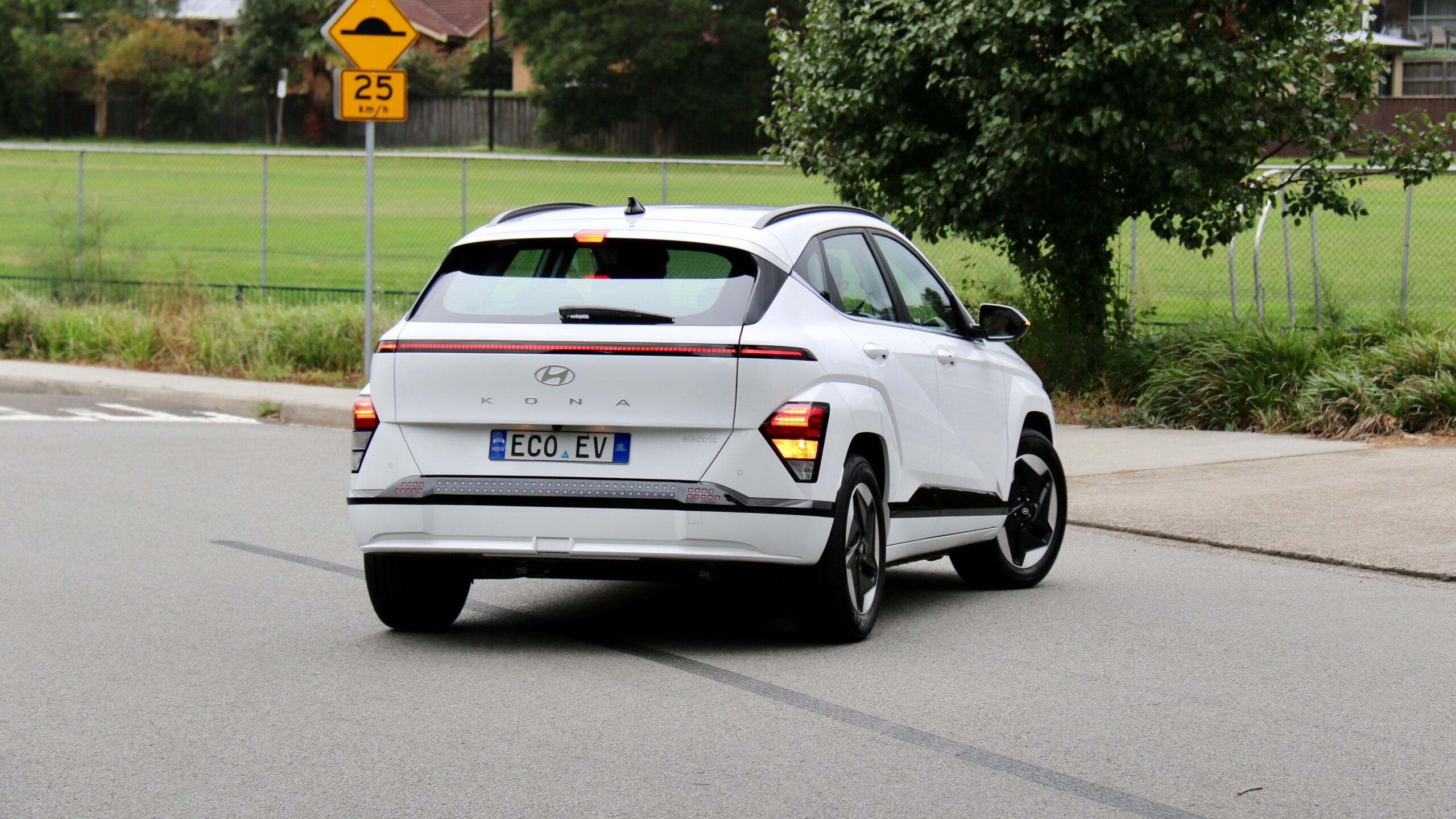
We – and multiple other local media outlets – have complained a lot about the speed assistance system that Hyundai (and Kia) has installed in its new cars over the past year or so, which reads speed signs and informs you if you’re speeding. That sounds great in theory in our speed camera-obsessed country but it often incorrectly reads signs and alerts you because thinks you’re speeding by beeping constantly. Hyundai has improved the system a bit with the Kona Electric as it’s now reportedly 3dB quieter – which means you can drown it out with reasonably quiet music – but it’s still not able to be permanently deactivated.
How comfortable is the 2024 Hyundai Kona Electric Standard Range?
Inside the 2024 Hyundai Kona Electric Standard Range is almost identical to the regular Kona, which saw a massive improvement compared to the model it replaced thanks to its bigger body, more futuristic and mature interior design and far more practical touches than before. Unfortunately, the regular Kona’s lacklustre quality with hard plastics covering almost every surface have carried over to the Electric variant. Thankfully, the leather steering wheel is quite nice, but a soft touch dash would be a great addition to the cabin to make it feel better quality, especially in the more expensive Electric variants.
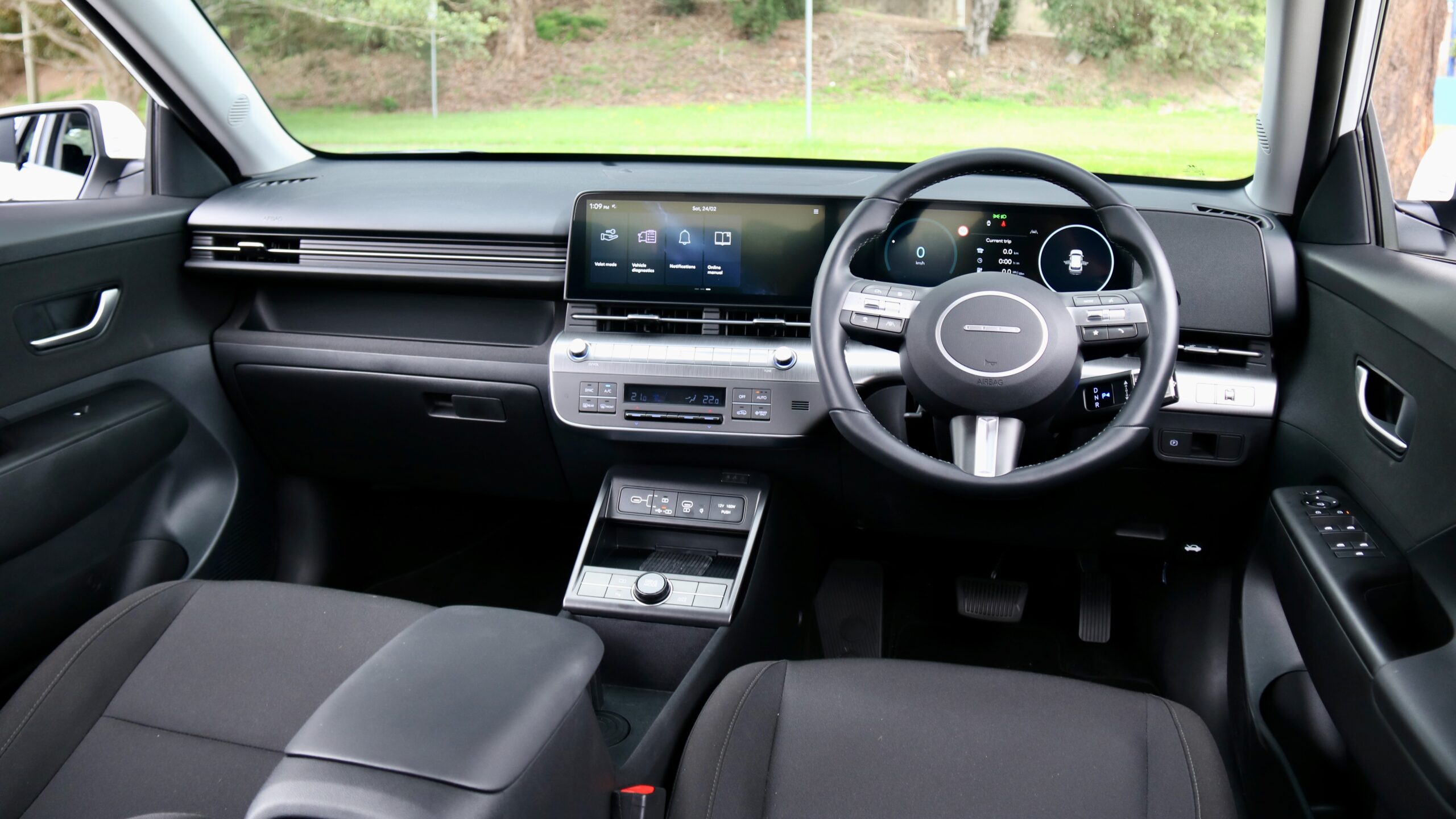
Centre of the Kona Electric’s cabin is a 12.3-inch touchscreen with Hyundai’s new infotainment software. It’s a fairly impressive system that improves on the already-solid system that’s used in the previous Kona and a lot of other current Hyundai products. Compared with the entry-level petrol Kona, the Electric Standard Range adds inbuilt satellite navigation, though it now has wired-only Apple CarPlay – an over-the-air software update will reportedly add wireless functionality in the near future.
As in the petrol Kona, we wish the colours used were a bit brighter – especially in the daytime – but it’s otherwise pretty good. Annoyingly, the rear camera gives a strange view when reversing close to other objects, which makes them seem closer than they are and switching the view removes the guidance lines. The six-speaker sound system is also above average in sound quality. We found the driving position a little flat, but the front seats are quite comfortable and the driver’s seat has electric lumbar adjustment, which is rare in base model products.
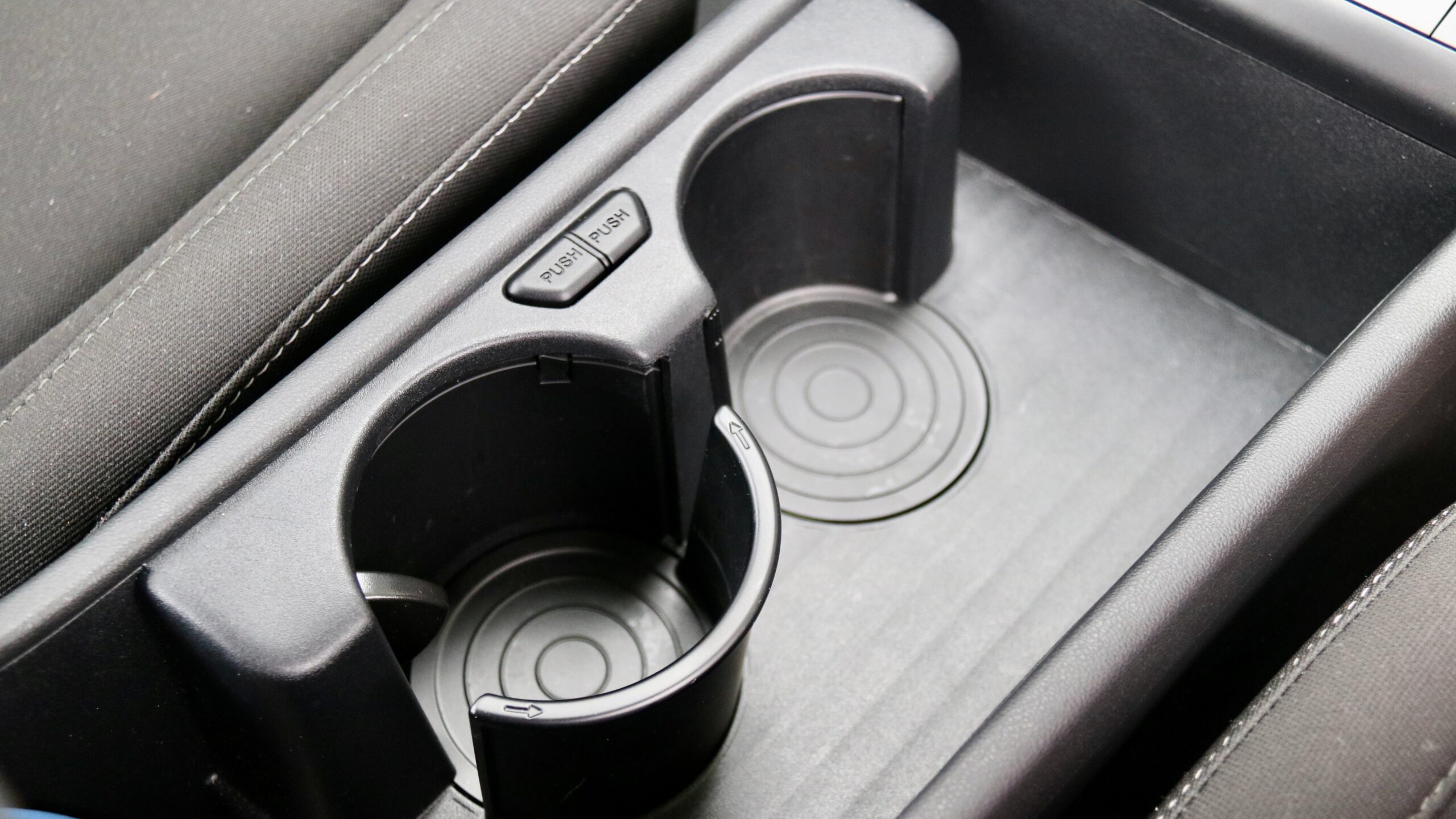
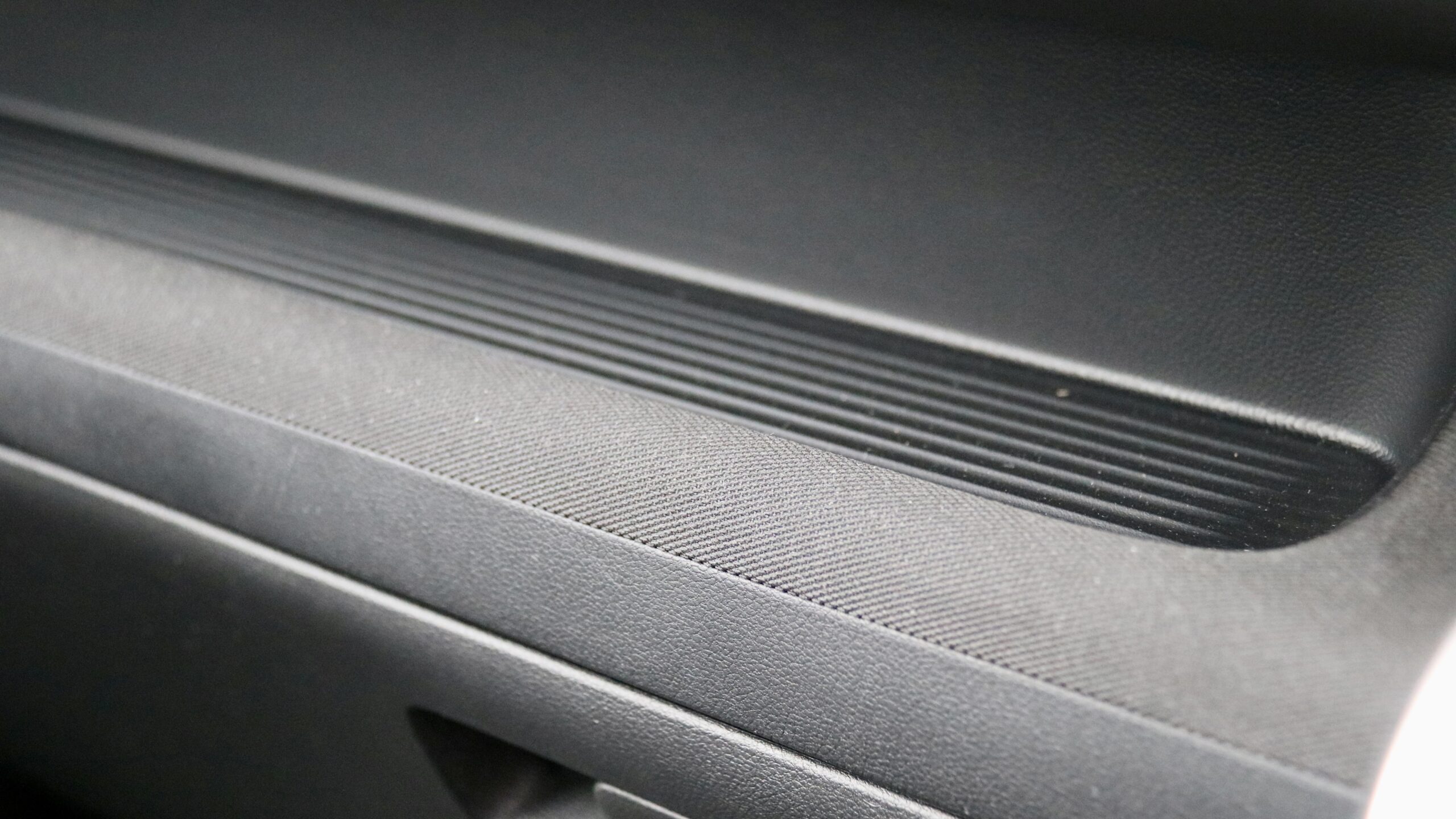
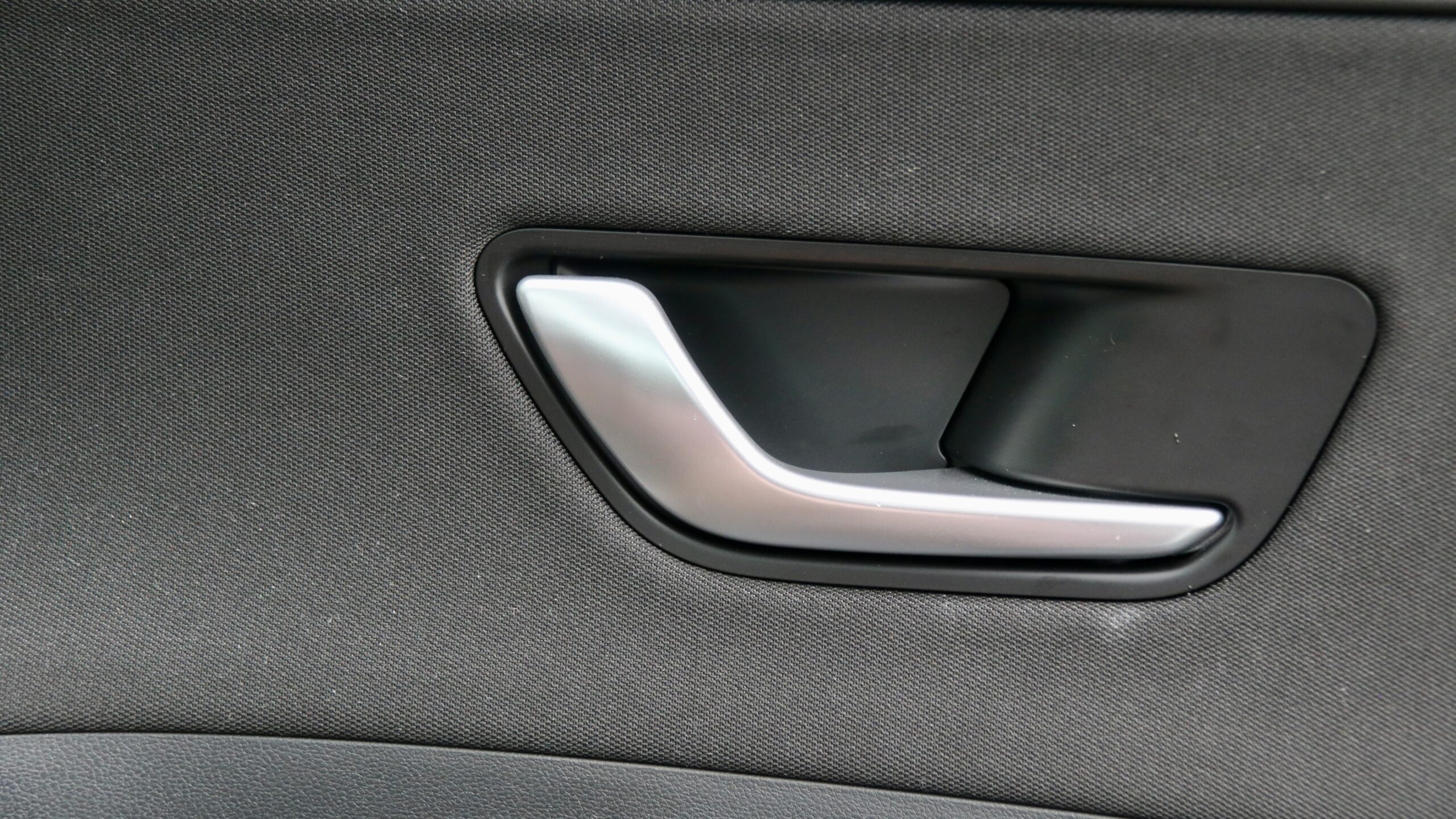
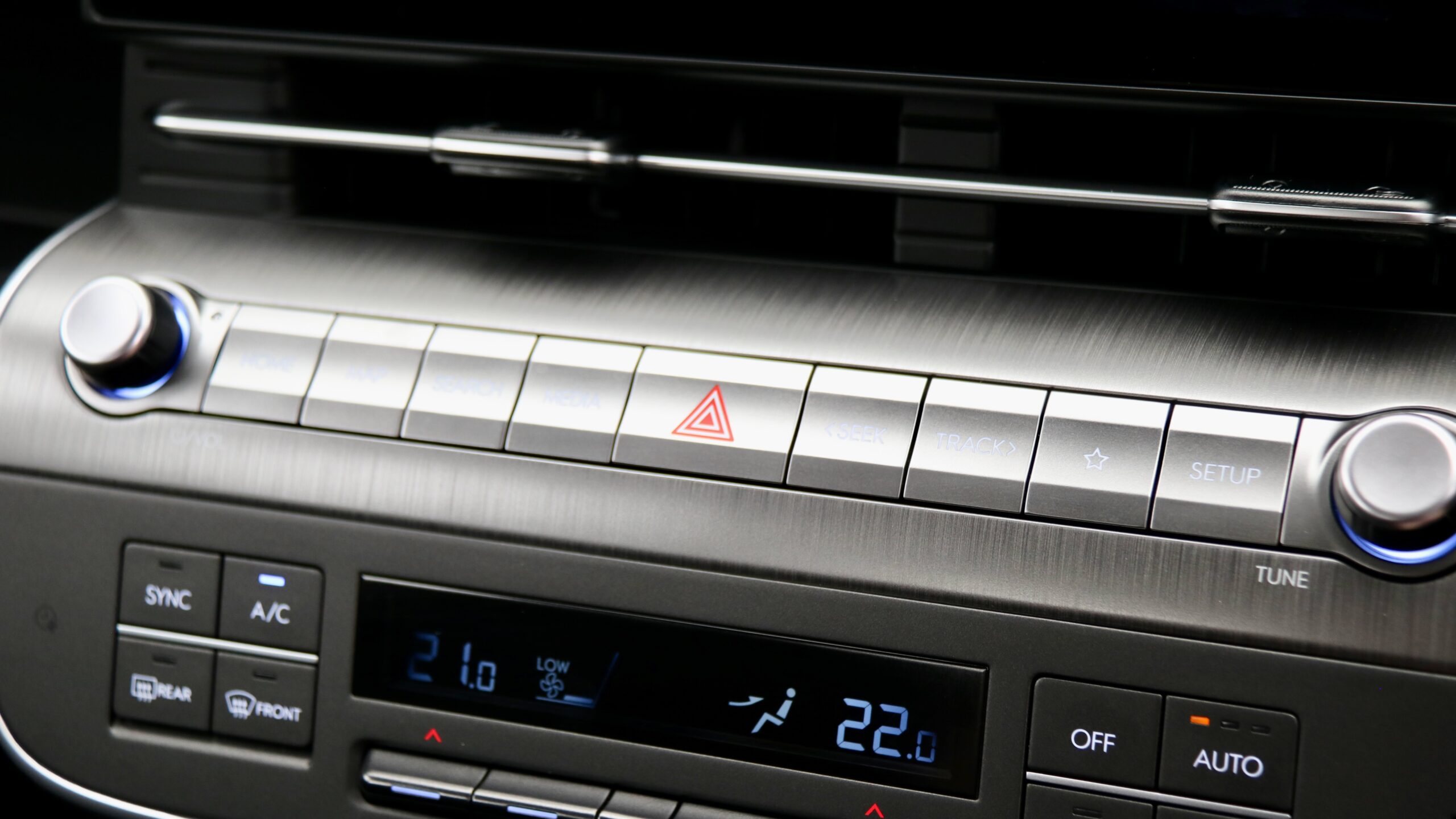
Storage inside the new Kona is a big improvement on the last model. We love the huge centre console storage, big cup holders and that even the base model is equipped with a – very effective – wireless phone charger. Further back is a centre armrest with storage underneath it (which is open, not closed), while there are also reasonable door bins, a nicely-sized glovebox, an open tray above the glovebox and an open area where the wireless charger is. Of note, the wireless charger has an ‘island’, which allows modern smartphones with big camera lenses to effectively charge – we think all cars should have that.
The back seat is a nice improvement over the previous Kona, and is now one of the roomiest in the segment. Two six-footers will be more than comfortable thanks to good knee- and headroom, while the seatbacks recline for greater comfort. In addition to that, all grades receive two USB-C ports – plus the three-pin socket – as well as air vents, a centre armrest with cup holders, two map pockets and reasonable door storage too. There are two ISOFIX points and three top-tether points for child seats.
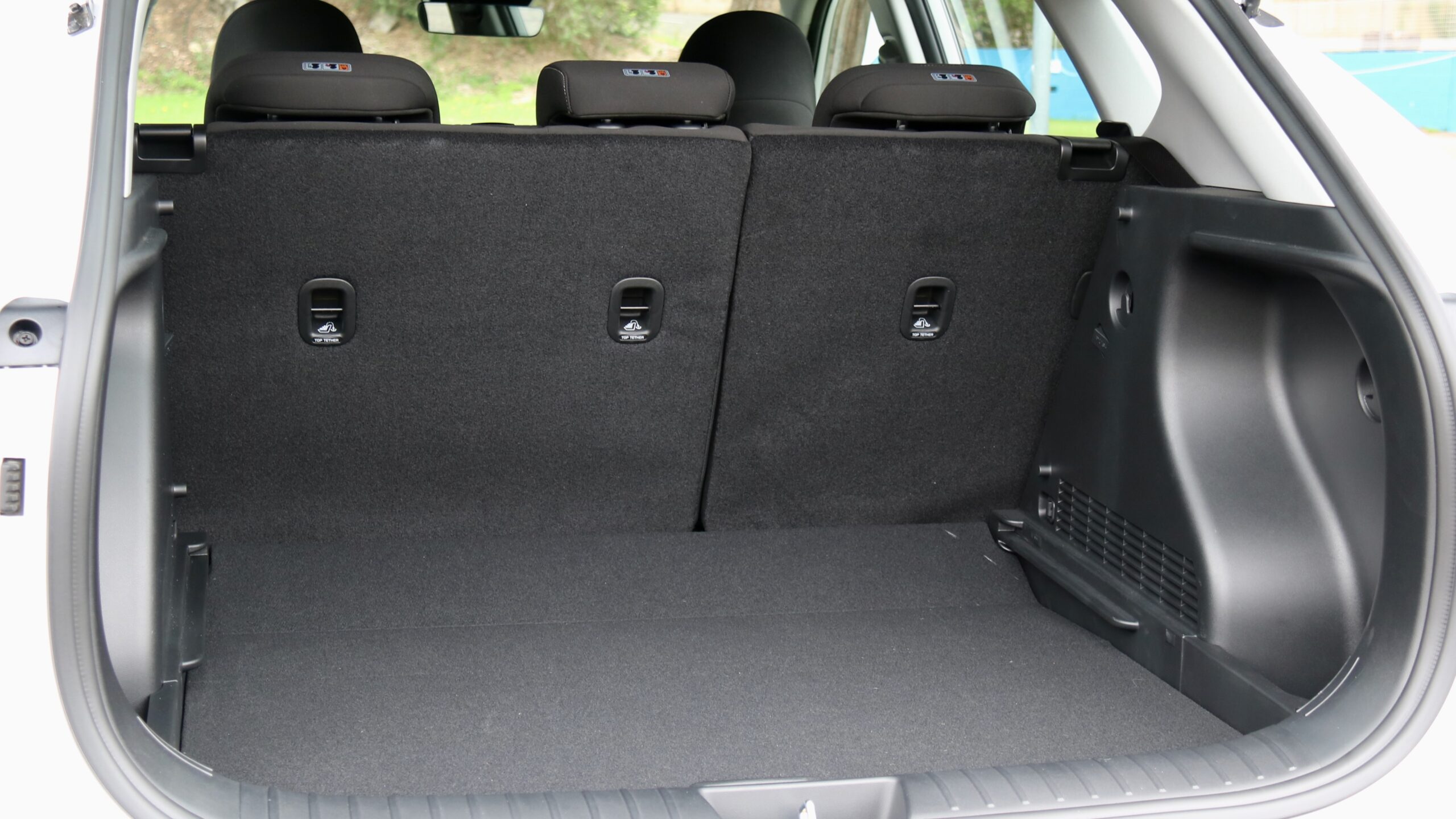
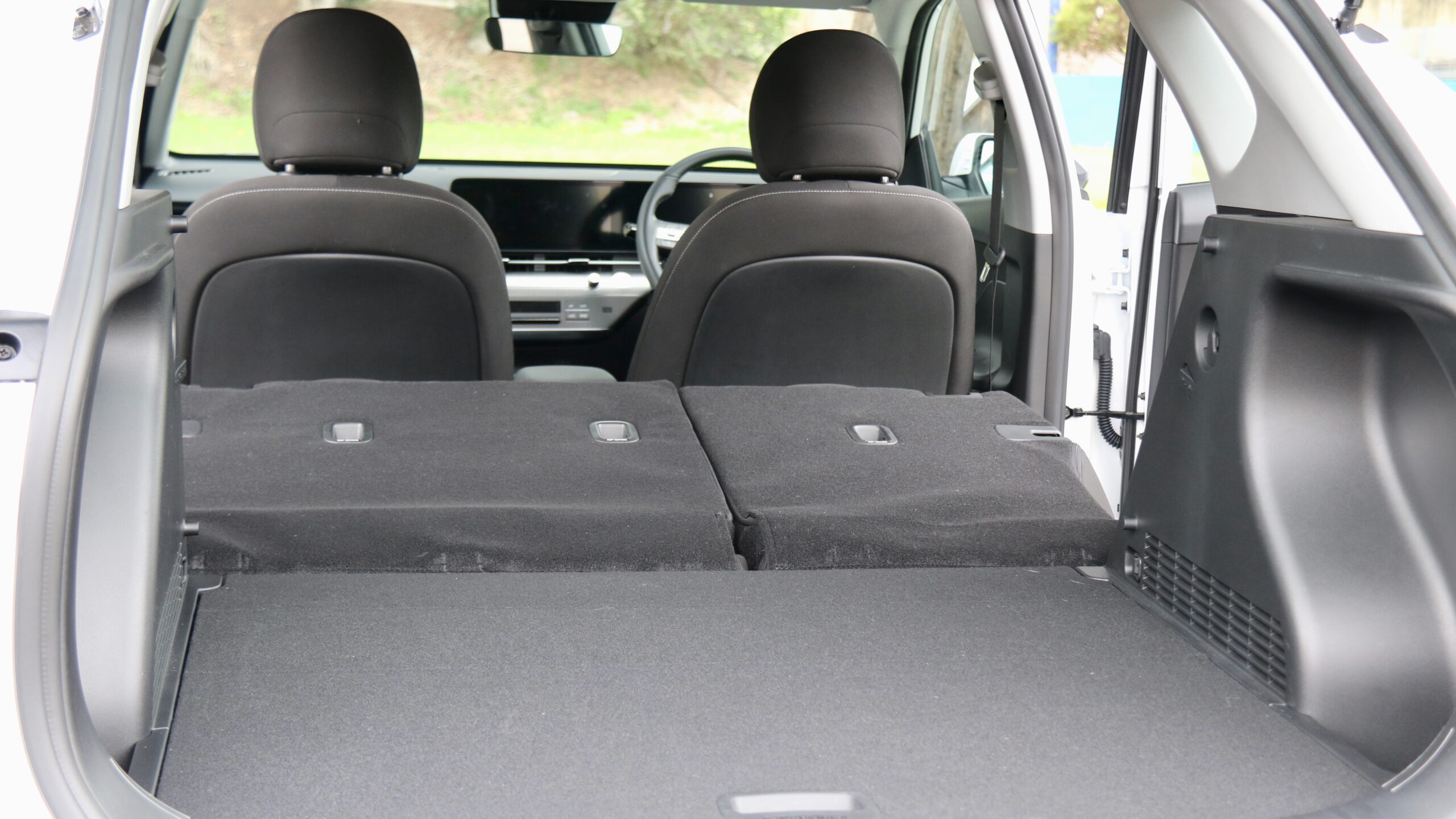
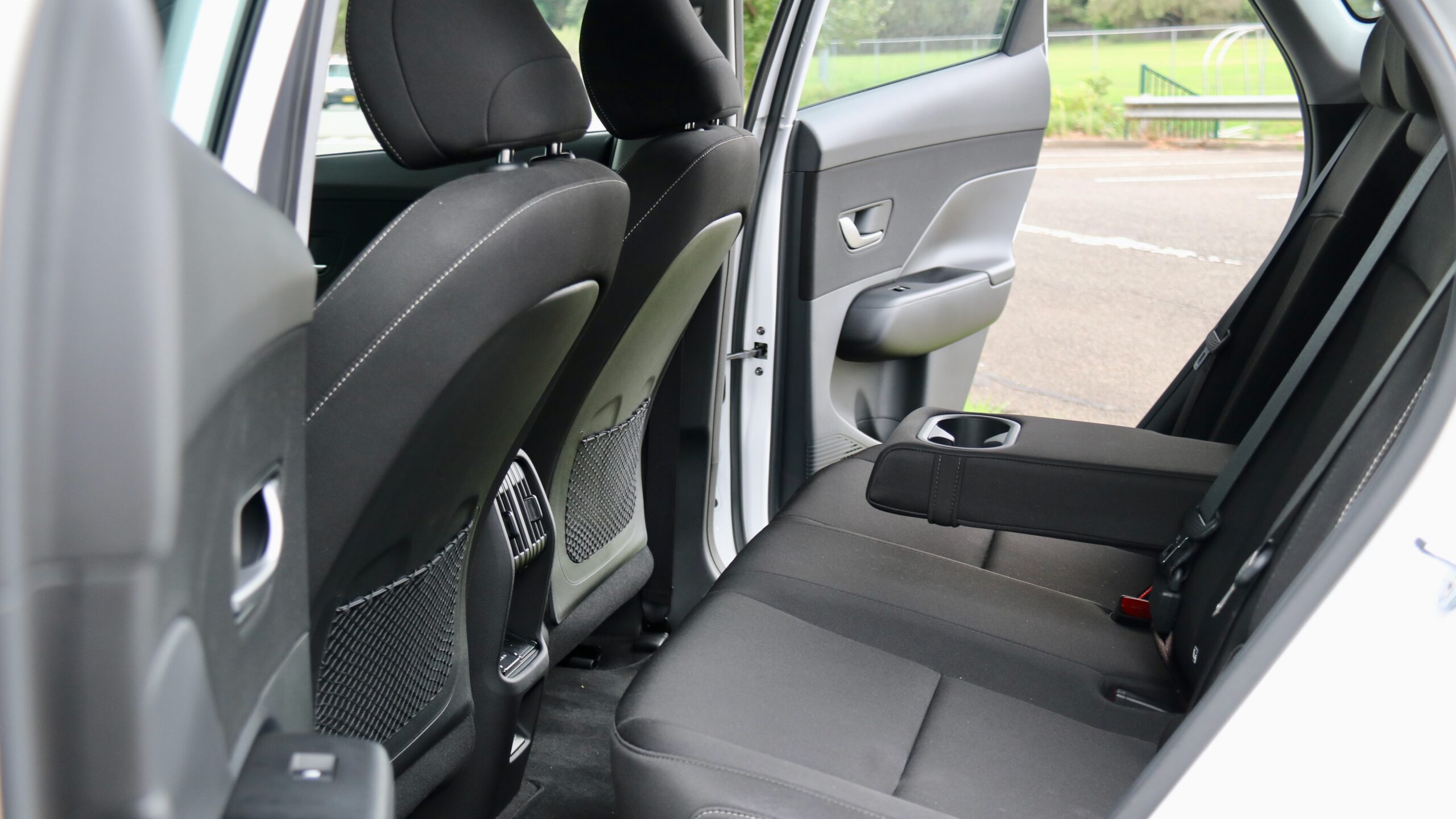
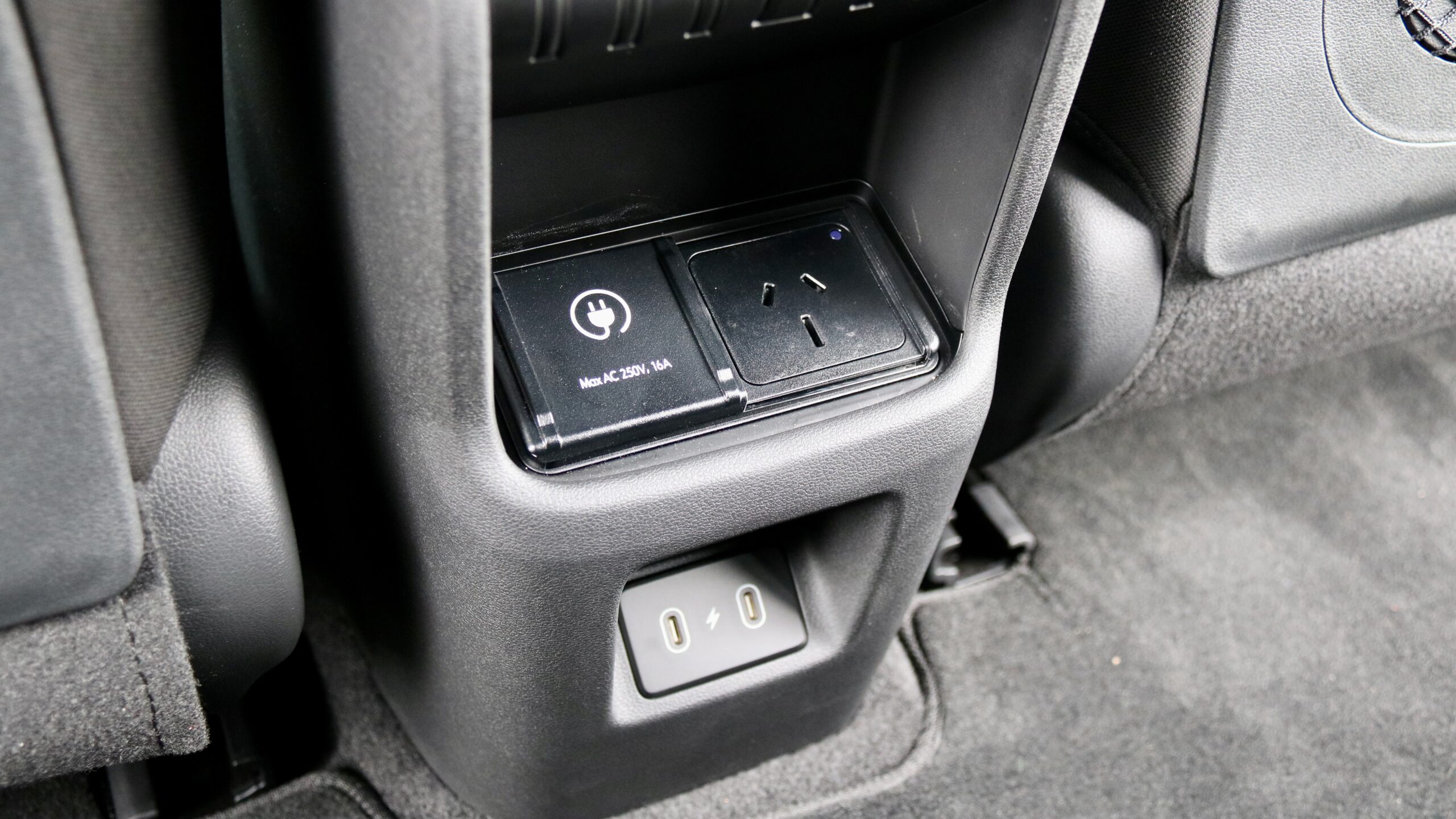
As with the back seat, the boot of the Kona Electric has seen a nice 75L boost in space to 407-litres with the seats up, and 1,241L with them folded, which is identical to the petrol model but slightly smaller than the Atto 3’s 440L/1,340L boot. There are handy features like hooks, an adjustable floor height and under floor storage. Plus, a space-saver spare wheel lies underneath the boot floor too.
What warranty covers the 2024 Hyundai Kona Electric Standard Range?
As with other new Hyundai products, the 2024 Hyundai Kona Electric Standard Range is covered by a five-year/unlimited km warranty with 12 months of roadside assistance that’s renewed a further 12 months with each scheduled dealer service. The battery is covered by an industry-standard eight-year/160,000km warranty as well.
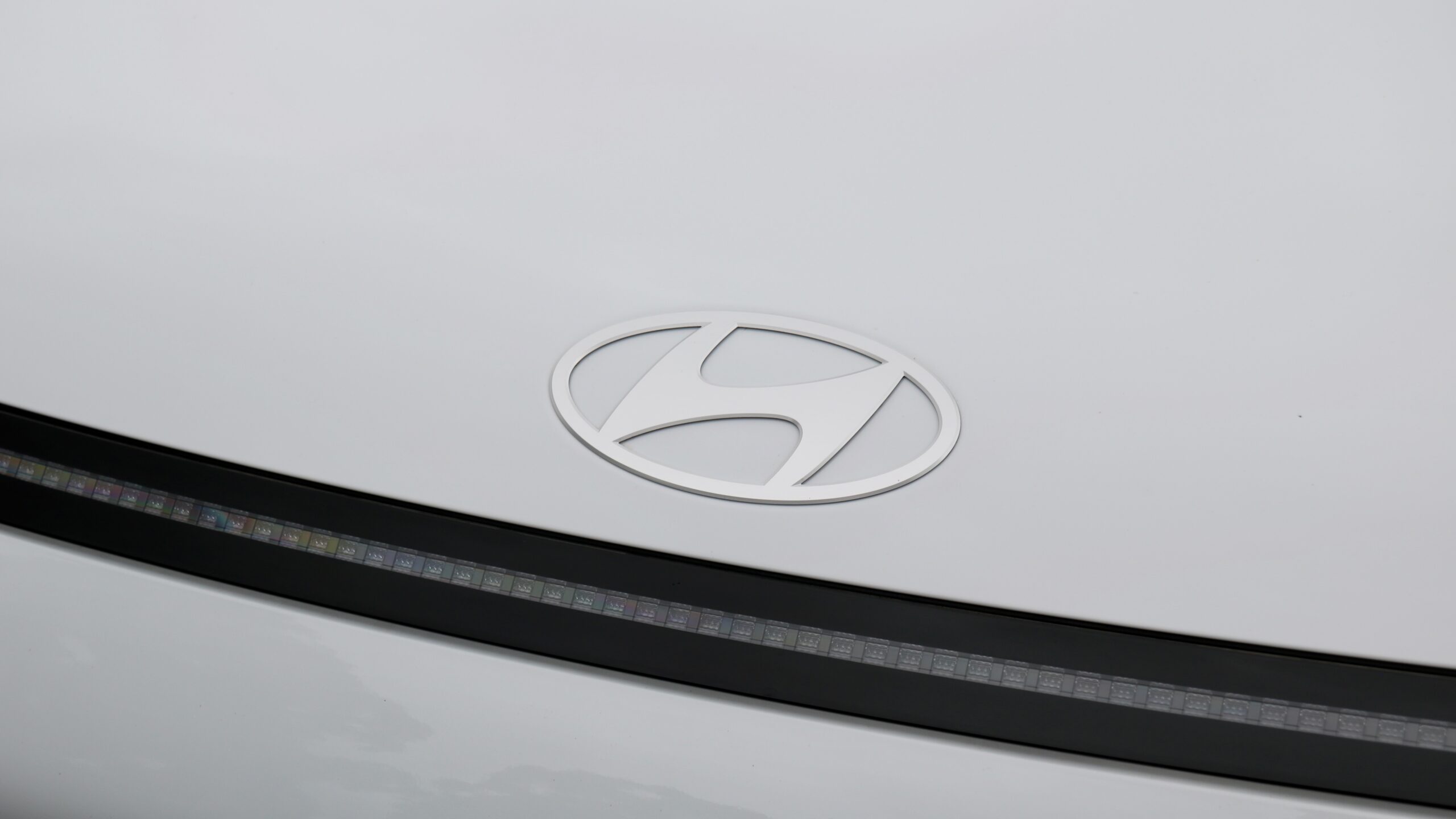
The Kona Electric’s service intervals are once every two years or every 30,000km, whichever comes first and the cost of servicing one is $1,560 over six years/90,000km ($260 per year). BYD’s vehicle warranty is a slightly longer six years but limited to 150,000km with the same eight-year/160,000km warranty for the battery, plus 12 months of roadside assistance. The Atto 3 requires a service every year or 20,000km, whichever comes first, and six years/120,000km of servicing costs $1,754 ($292 per service).
Should I buy a 2024 Hyundai Kona Electric Standard Range?
Overall, the 2024 Hyundai Kona Electric Standard Range is a solid improvement on the previous model, thanks to its larger size, increased practicality, more handsome styling, improved technology, added comfort, solid driving dynamics, good efficiency and range and – thanks to added equipment and yet, reduced cost – a better value equation than before.
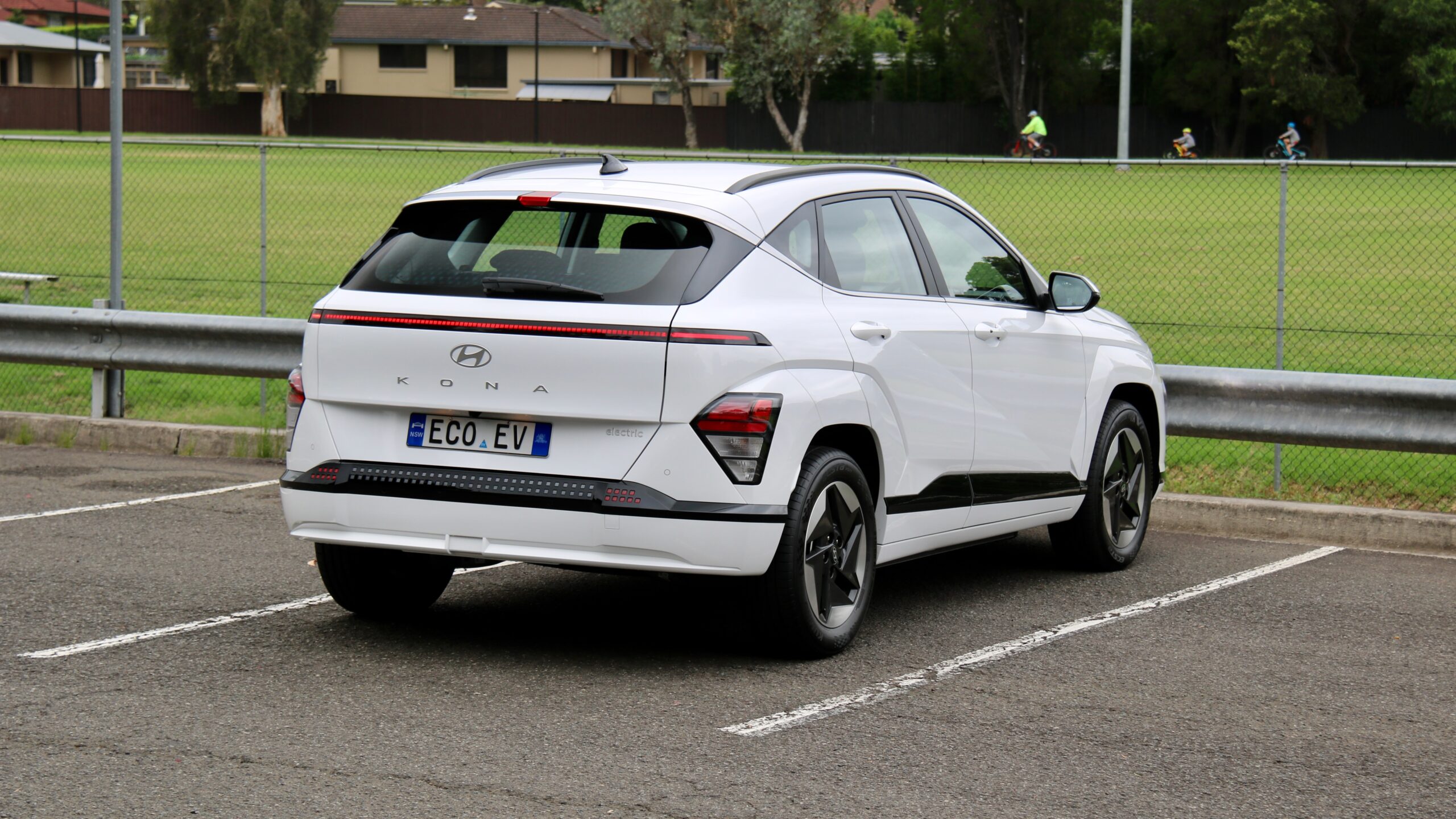
Counting against the new Kona is that its main rival is $6,000 less expensive but has more features, its interior quality is more $30,000 than $60,000, the annoying speed limit system has been improved but not eradicated and that there’s still a big price premium for the electric version over the petrol model. But those issues aside, the new Kona Electric is a pretty good product and if you’re in the market for a sub-$60,000 electric car, it must be on your test drive list.
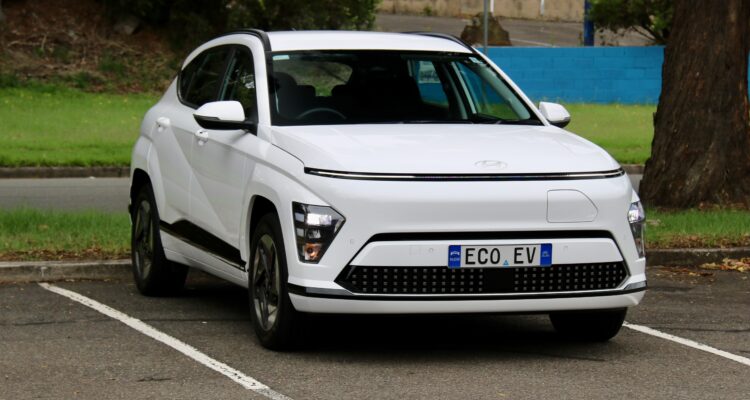
Leave a Reply